Home façades set the mood long before anyone crosses the threshold, and choosing the right exterior house colors has never felt more pivotal — or more inspiring. Paint companies and design forecasters agree that 2025’s palette is all about harmonizing with the landscape, boosting curb appeal, and showcasing personality through subtle nuance or bold drama. From soft sages that merge seamlessly with greenery to statement-making charcoals that highlight crisp architectural lines, the options span every taste and climate. Drawing on the latest color-of-the-year releases, builder-tested favorites, and expert design insights, the following 25 ideas give you a practical roadmap — plus plenty of encouragement — to find a hue you’ll love coming home to.
1. Inviting Warm Whites Elevate Any Style
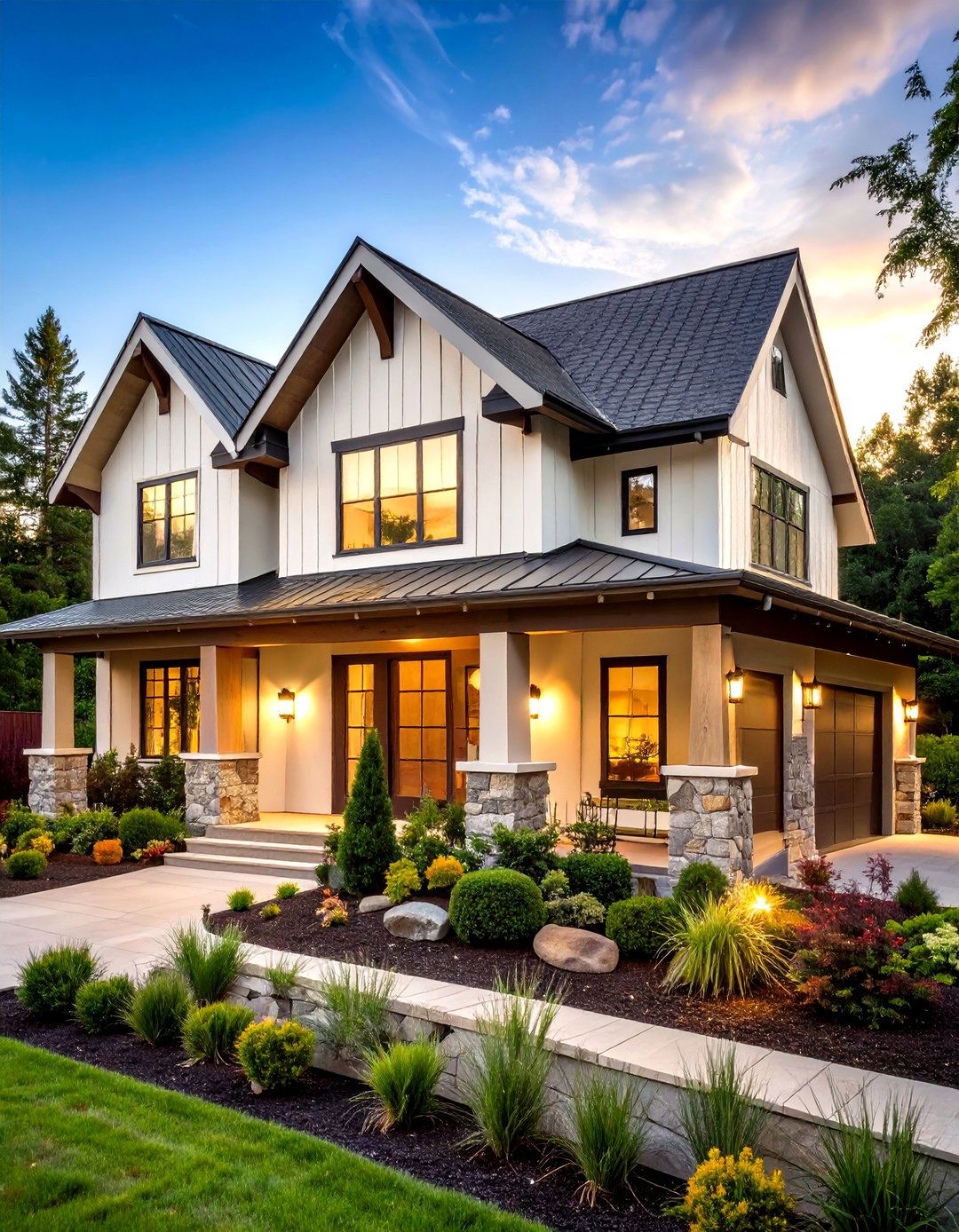
A sun-washed white exterior house color never goes out of fashion, yet 2025’s versions lean creamy instead of stark. Benjamin Moore’s well-loved White Dove and Swiss Coffee show why softer undertones feel welcoming while still offering a blank canvas for contrasting shutters or natural stone accents. Go beyond the farmhouse cliché by pairing cozy whites with matte black fixtures or organic wood soffits — details that keep the facade timeless but not predictable. Test large samples on all sun exposures; a bright southern wall may read much lighter than a shaded porch. Finally, remember that lush landscaping pops against warm whites, adding easy curb-appeal points without another coat of paint.
2. Greige Neutrals Bring Peaceful Sophistication

Greige — a balanced blend of gray and beige — continues to earn rave reviews from architects seeking elegant restraint in exterior house colors. Brick&Batten’s earth-tone forecast calls canvases like Canvas Beige plus Stormy Gray “instant classics” for homeowners who want subtle contrast without harsh lines. These organic neutrals pair beautifully with warm bronze gutters or limestone lintels, letting textures shine while calming busy streetscapes. Opt for a slightly darker trim to outline windows and visually lift the roofline. Because greige subtly shifts with daylight, paint two shades lighter than you think you need on broad, sun-soaked façades to avoid an unintended muddy cast in late afternoon.
3. Serene Sage Greens Connect Home and Garden
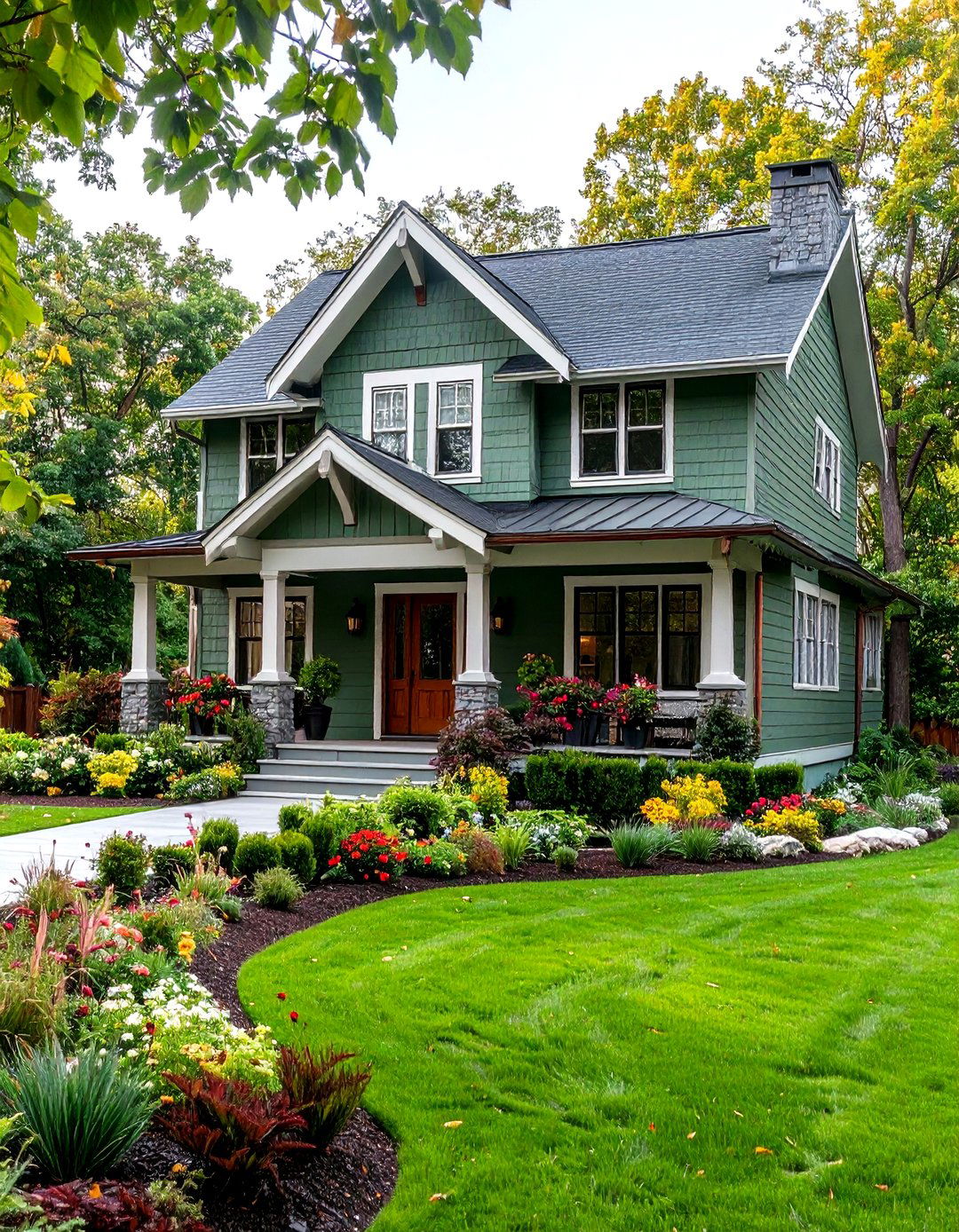
Soft sage exterior house colors top multiple 2025 trend lists, praised for reflecting nature and soothing urban nerves. The Spruce highlights mid-tone shades such as Winchester Sage, while designers at Brick&Batten tout sage for its surprising versatility on Craftsman, ranch, and modern forms alike. Against crisp white trim and pewter hardware, sage reads sophisticated rather than cottage-cute; add copper downspouts for earthy elegance. If you live amid lush trees, pick a sage with gray undertones so the house holds its own. Those in drier climates might lean into a dustier hue that complements native grasses instead of fighting them.
4. Deep Charcoal Frames Modern Lines
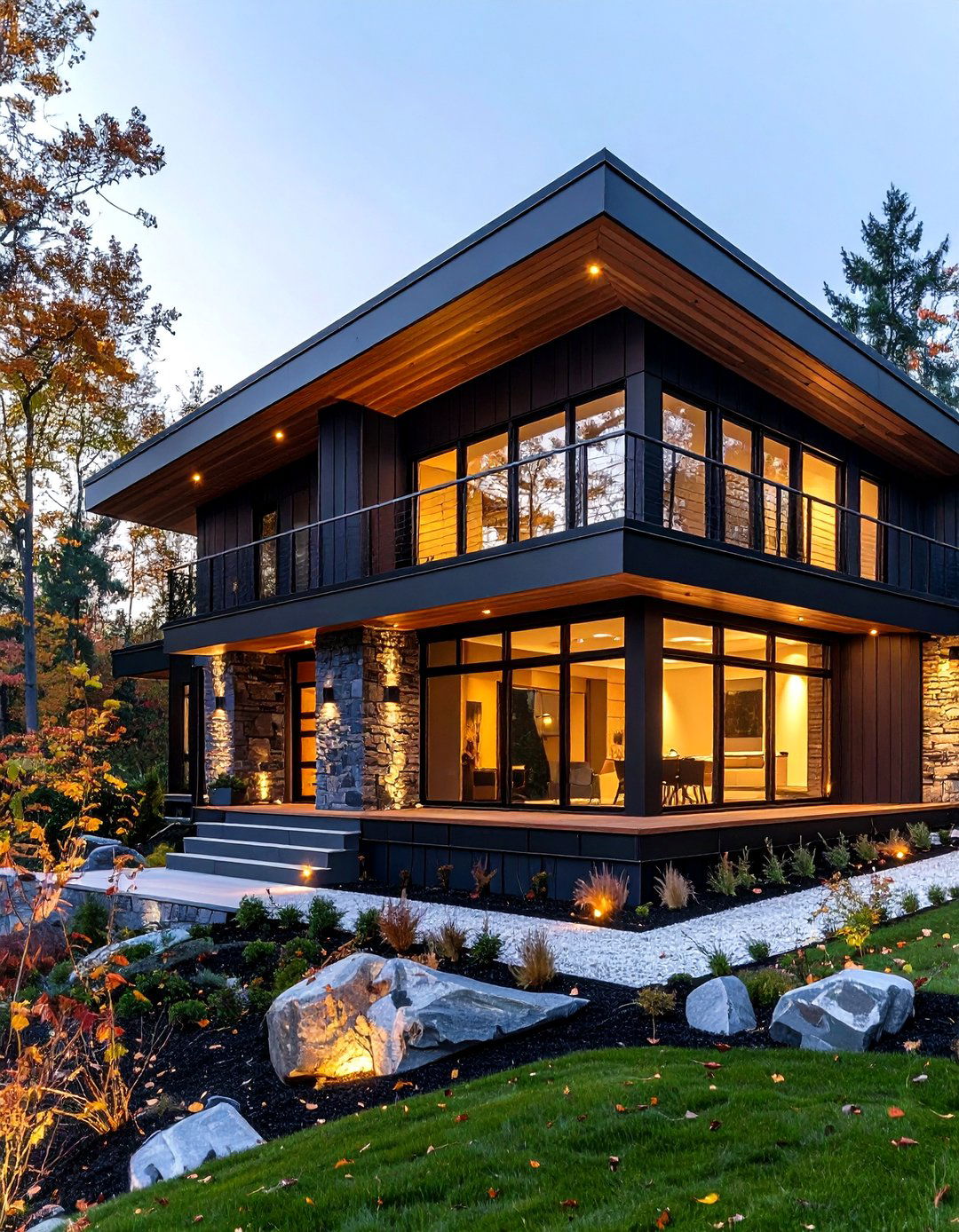
Nothing spotlights architectural geometry quite like a charcoal exterior house color with blue-green undertones, a shade Brick&Batten calls “complex dark. ” When rendered in a super-matte finish, charcoal absorbs glare, allowing metal railings or cedar soffits to pop dramatically. Homeowners hesitant to coat an entire façade can deploy charcoal on gables or second stories while anchoring the first level with stone veneer. Because dark paint retains heat, invest in high-performance coatings rated for UV stability, and schedule touch-ups more frequently in harsh climates. At night, warm uplighting softens charcoal’s boldness and ensures the home remains welcoming rather than foreboding.
5. Navy Blues Offer Coastal Depth Anywhere
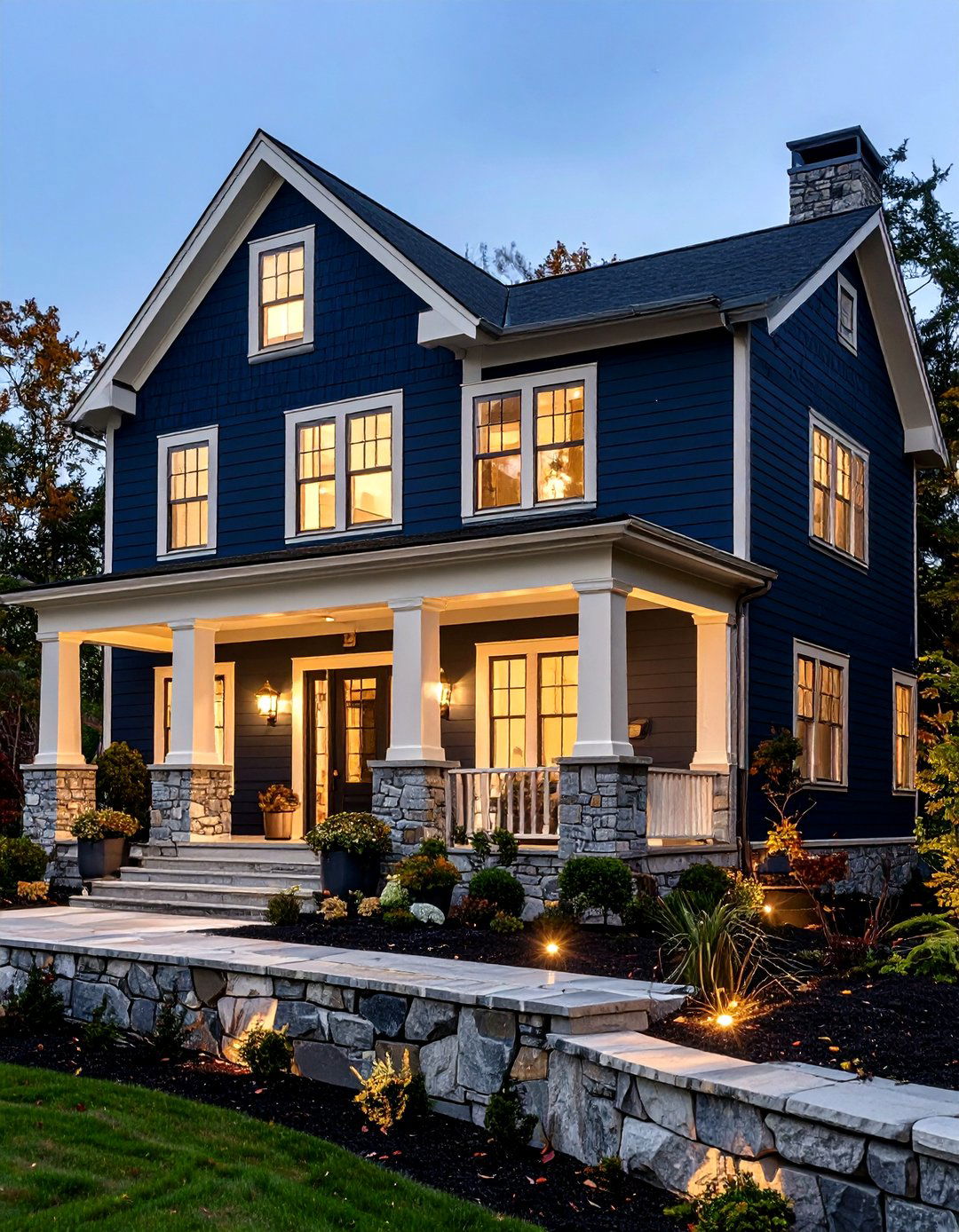
Moody navy exterior house colors — think Hale Navy or Midnight Blue — earn high marks from Better Homes & Gardens for their chameleon-like ability to feel nautical, traditional, or cutting-edge depending on accents. Pair with soft off-white trim and brushed brass sconces for Cape Cod charm, or juxtapose navy against pale cedar shakes for Scandinavian flair. On larger façades, break up expanses with natural stone columns or bright window muntins to prevent a monolithic look. Because dark blues can skew purple under cool LEDs, evaluate samples under both daylight and porch lighting before finalizing your gallon order.
6. Bold Black Makes a Minimalist Statement
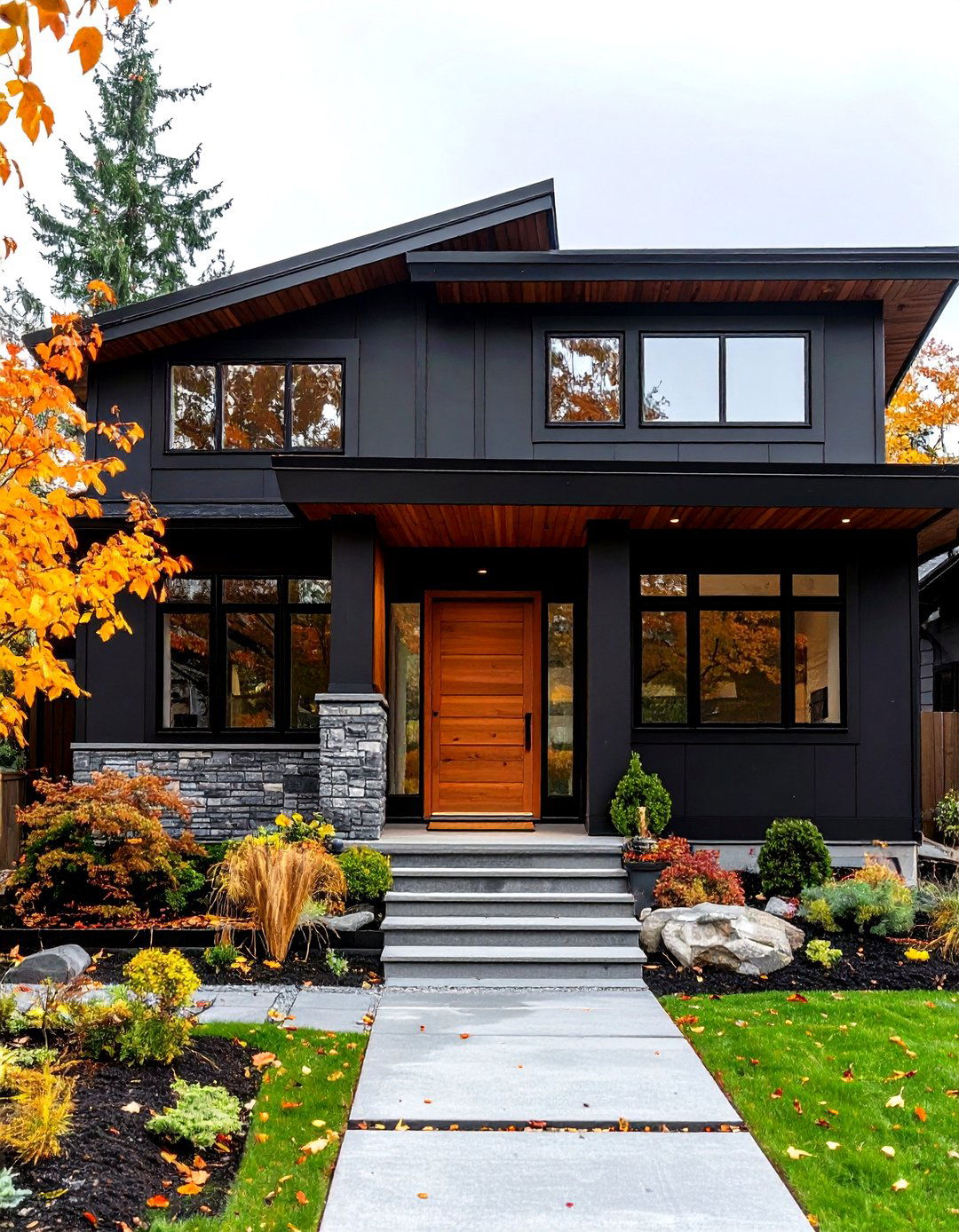
Designers once reserved inky black exterior house colors for modern barns, but 2025 sees full-scale black façades in suburbs everywhere. Deep charcoals like Sherwin-Williams Iron Ore and Behr’s Cracked Pepper headline BHG’s curb-appeal list, citing their crisp contrast against landscaping and hardware. To soften the edge, integrate warm cedar soffits, trellises, or a stained-wood front door that invites rather than intimidates. Matte finishes hide surface imperfections, yet glossy black trims around windows can add architectural depth. Black absorbs more solar heat; use a radiant barrier beneath roof decking and ensure attic ventilation meets code to keep summer cooling costs in check.
7. Terracotta Tones Add Mediterranean Warmth
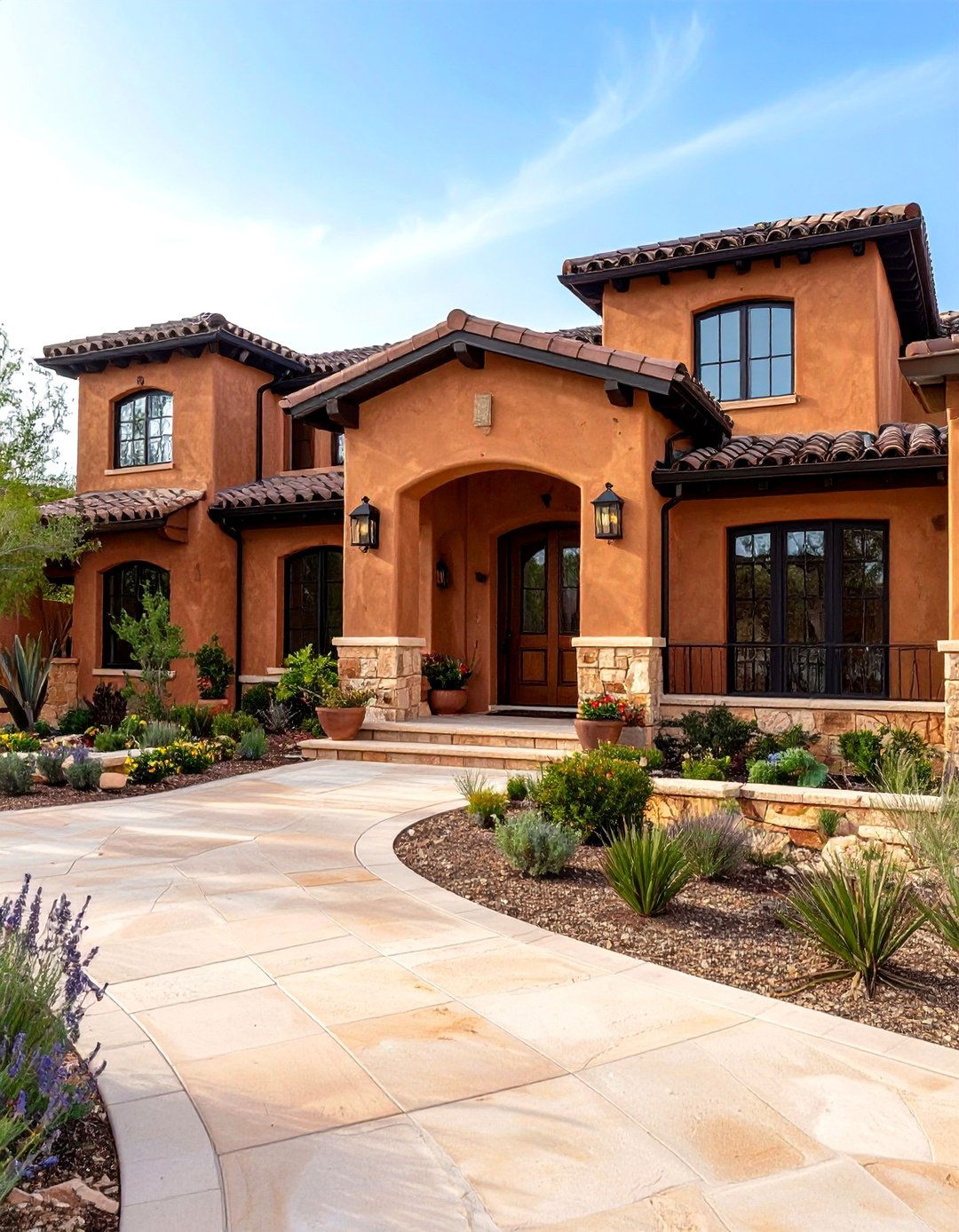
Homeowners craving sun-drenched warmth are embracing terracotta exterior house colors — rich yet earthy oranges that echo clay rooftops and desert evenings. Behr’s 2025 Color of the Year, Rumors, captures this vibe and pairs beautifully with bronze fixtures or creamy limestone lintels. Terracotta thrives on stucco, brick, or fiber-cement siding with a sandy texture that mimics adobe walls. Balance the saturated hue by choosing trim two shades lighter and anchoring the palette with charcoal roof tiles. In humid areas, pick a paint line formulated to resist chalking so the color retains its warm depth for years.
8. Taupe Neutrals Bridge Cool and Warm Palettes
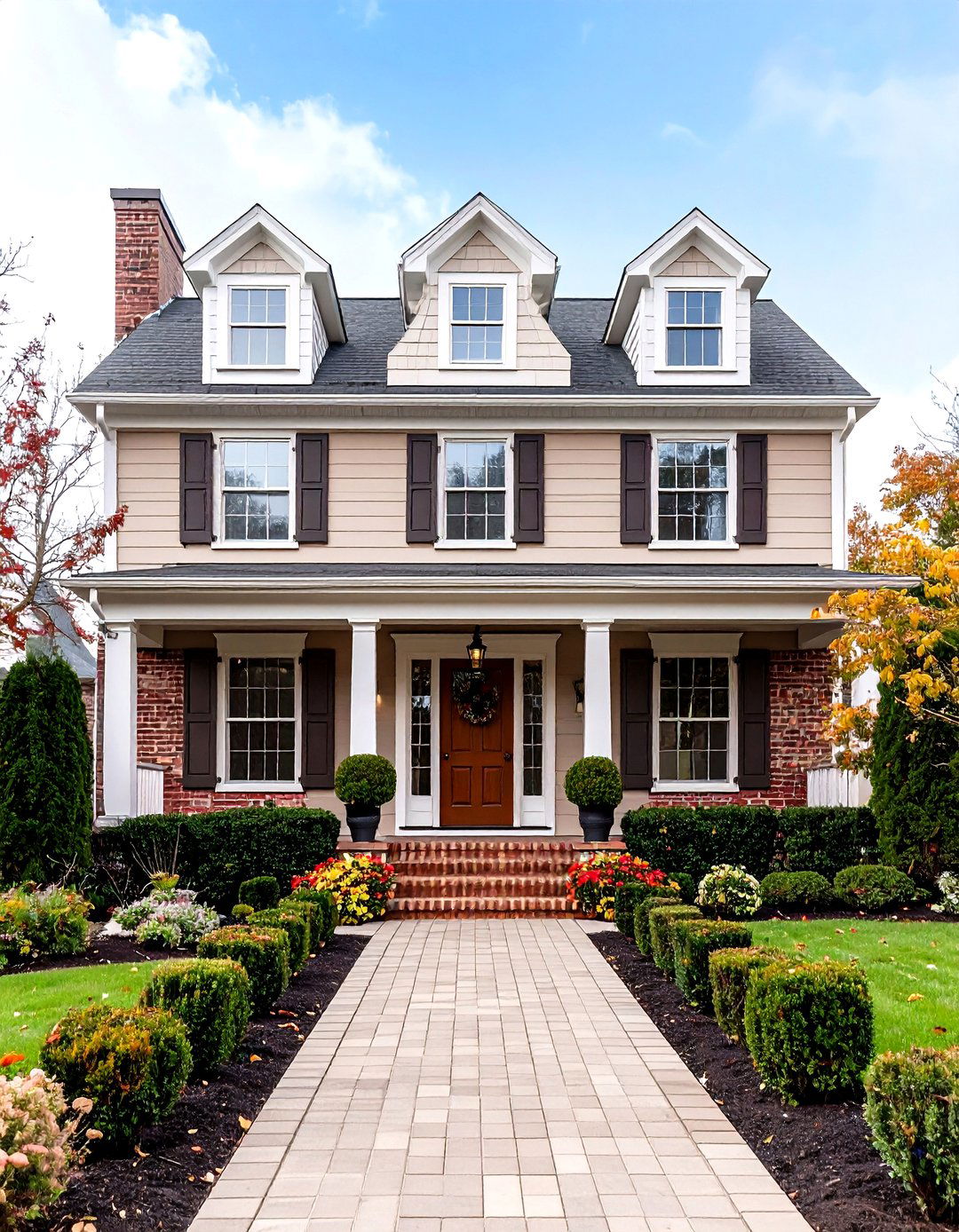
Dusky taupe exterior house colors blend gray’s calm with brown’s coziness, earning a spot among BHG’s top trends for 2025. Shades like Sherwin-Williams Perfect Greige shift subtly throughout the day, never reading too cold or beige. Taupe excel on brick-veneer Colonials where you want an updated feel without stripping character. For a layered look, paint shutters one shade deeper and choose an off-white fascia. Planting evergreen boxwoods or columnar junipers nearby enhances taupe’s sophisticated neutrality while guaranteeing year-round color in the landscape.
9. Breezy Coastal Blues Refresh Urban Streets
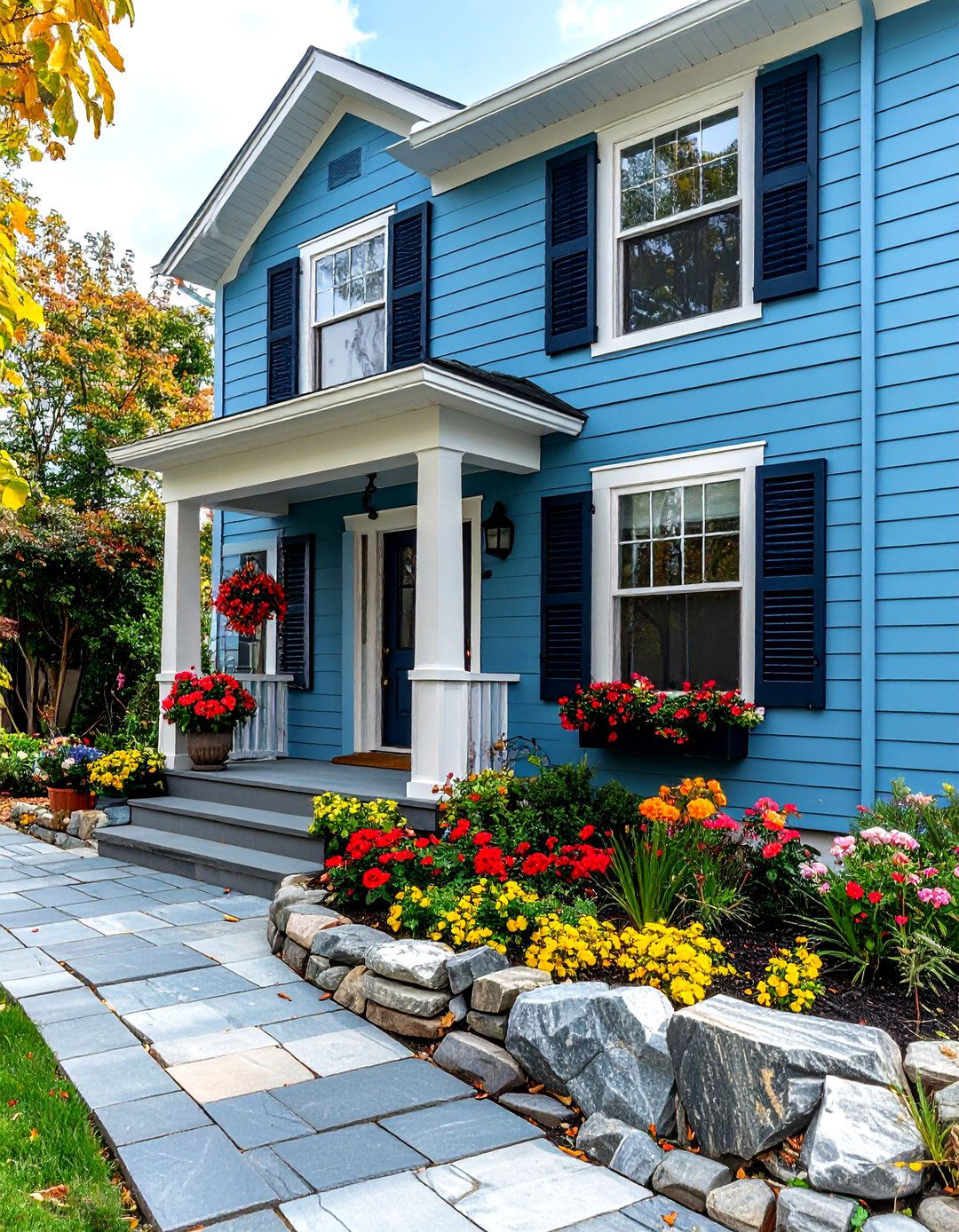
A casual coastal exterior house color palette — soft sky blues, sandy whites, and nautical navy — brings beach vibes to landlocked lots. Benjamin Moore’s design guide recommends pairing Seapearl siding with Hale Navy shutters for instant charm, while Homes & Gardens notes that airy fabrics and sun-bleached hues cultivate seaside ease indoors and out. To make the scheme feel mature rather than vacation-kit, ground it with slate-gray pavers or board-and-batten detailing. Avoid overly glossy finishes; a low-sheen formula echoes driftwood’s matte texture and hides salt spray or city grime equally well.
10. Canvas Beige Gives Heritage Homes Breathing Room
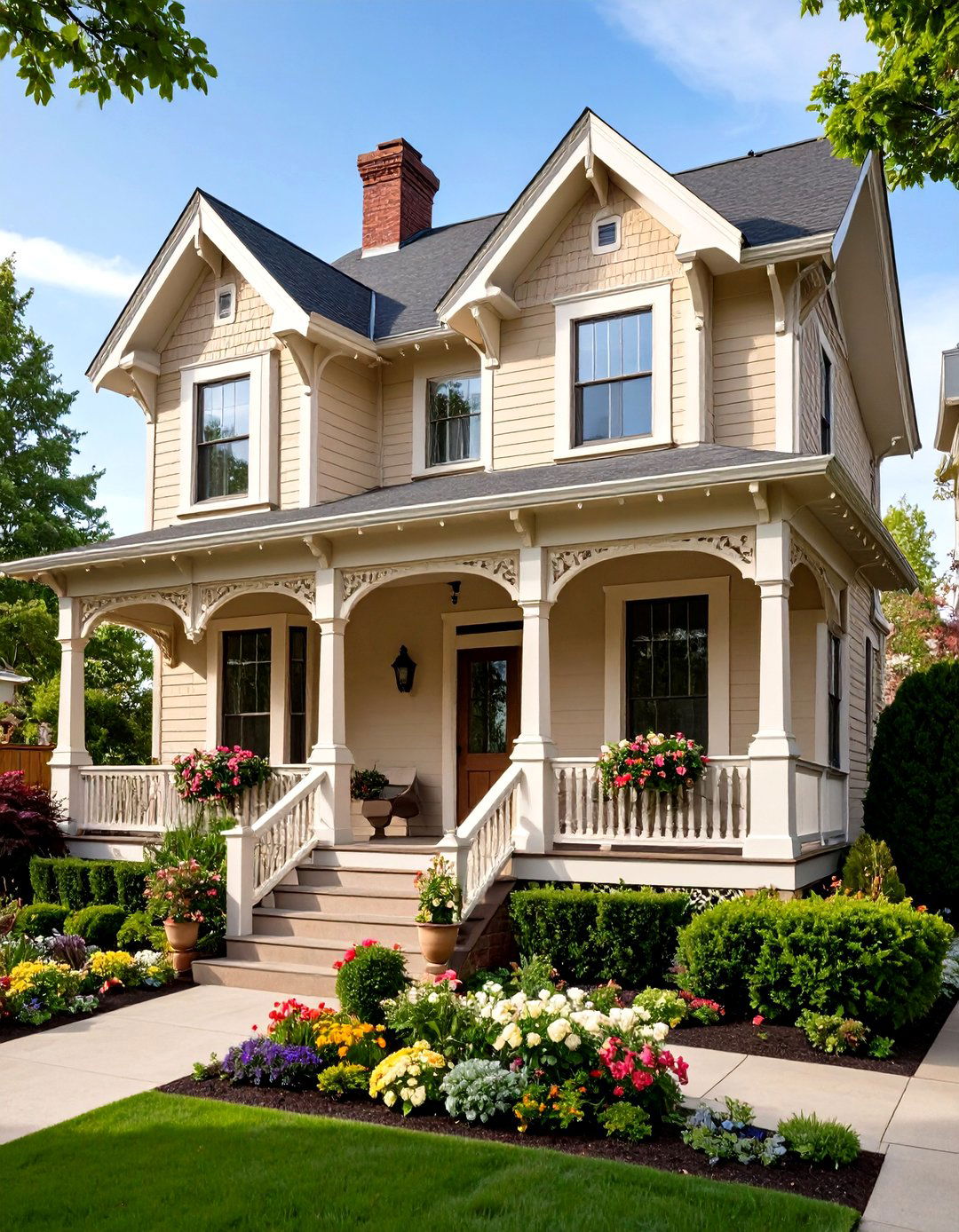
Classic beige exterior house colors remain indispensable where HOA guidelines favor traditional schemes. Brick&Batten’s “White Bungalow & Gravel Gray” duo shows how warm beige siding paired with slightly darker trim adds interest without breaking neighborhood rules. Beige excels on Victorian or Colonial façades burdened by ornate trim — the neutral backdrop lets corbels and brackets shine. Because beige can wash out under bright sunlight, sample three tones across elevations and revisit at dusk. Accent with oil-rubbed bronze door hardware to modernize without straying from a conservative palette.
11. Chalky Greens Offer Subtle Earthiness
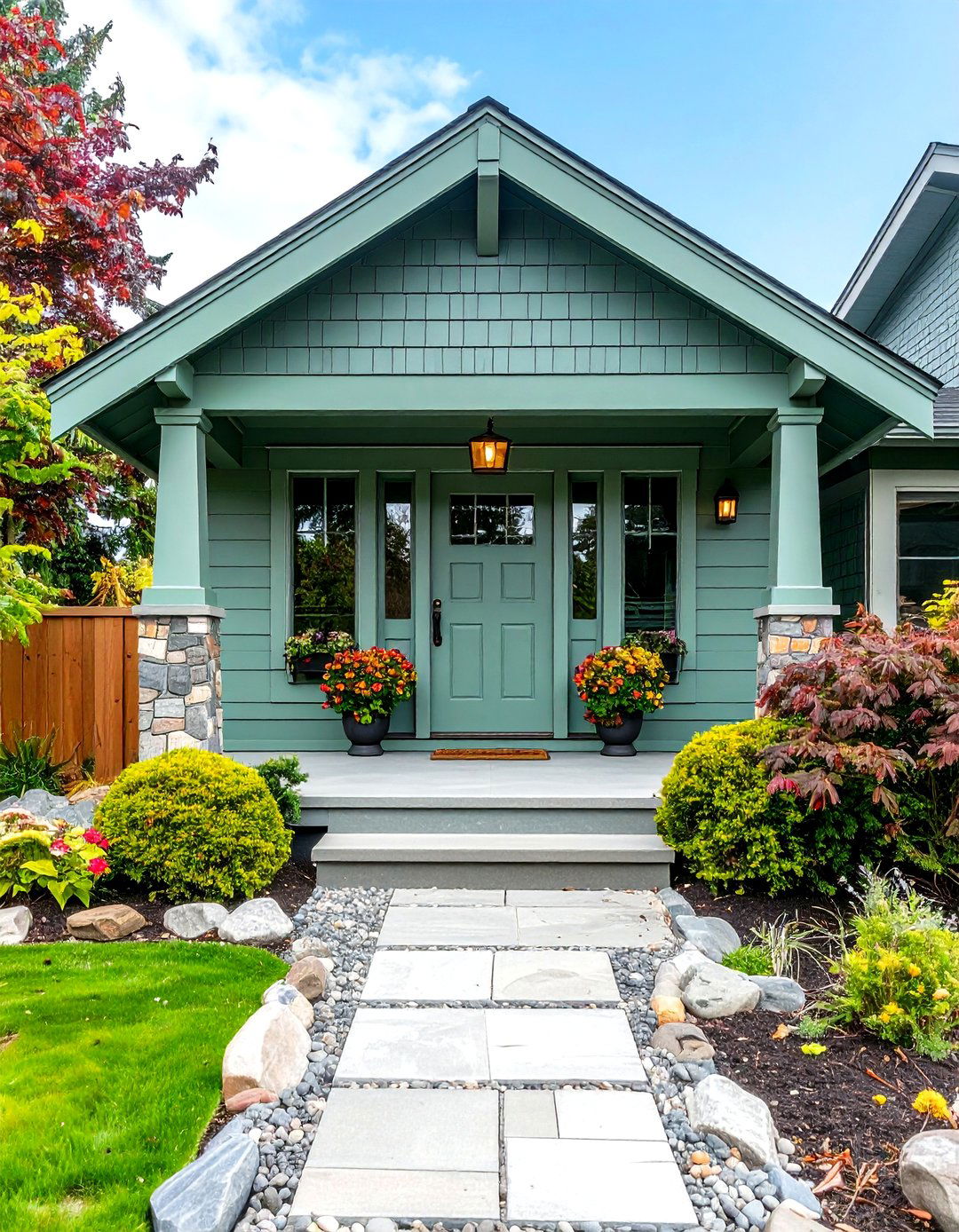
Design journalists spotlight chalky, gray-washed greens as a gentle evolution of the sage craze. Valspar’s Sprig of Sage or Benjamin Moore’s Saybrook Sage provide just enough pigment to stand apart from beige while staying neutral-friendly. These exterior house colors shine on ranches and bungalows nestled amid mature oaks, echoing mossy trunks. Complete the look with sandstone pathways and aged-bronze knockers that pick up the paint’s faint brown undertone. Because muted greens can read cooler in heavy shade, lean one notch warmer if your home faces north.
12. Muted Plum Adds Unexpected Sophistication
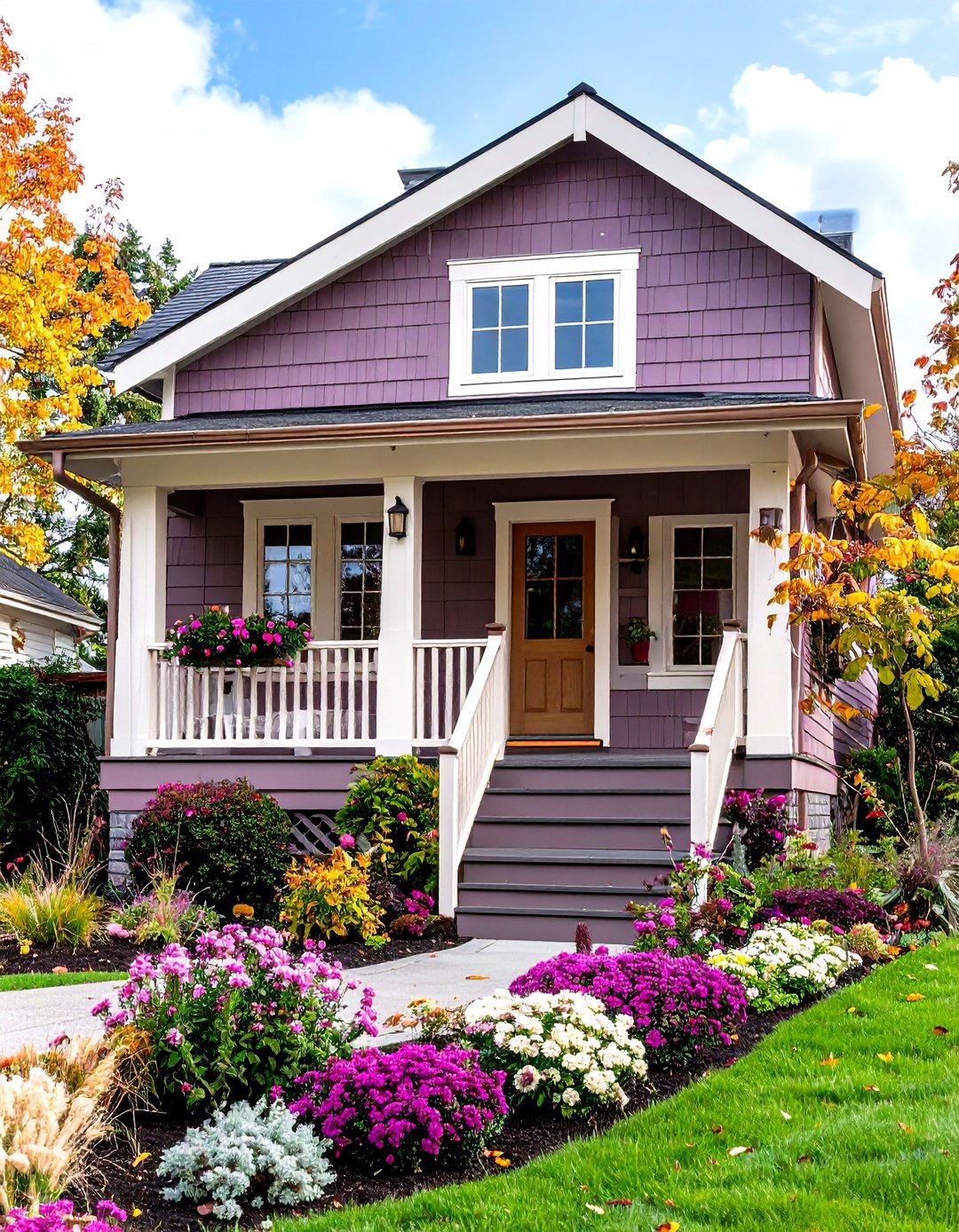
Benjamin Moore’s Cinnamon Slate introduces a nuanced plum-brown perfect for homeowners craving color without neon vibrancy. This exterior house color feels modern on mid-century profiles yet elegant enough for shingle-style cottages. Complement with cream-trimmed windows and matte-black railings to sharpen lines. Plum shades pair surprisingly well with copper gutters, which patinate to green and enhance the hue’s depth over time. Before committing, paint a large plywood sample and prop it against your stonework; natural daylight will expose subtle red or brown flashes you may want to amplify in hardware choices.
13. Ruby Red Makes Traditional Architecture Pop
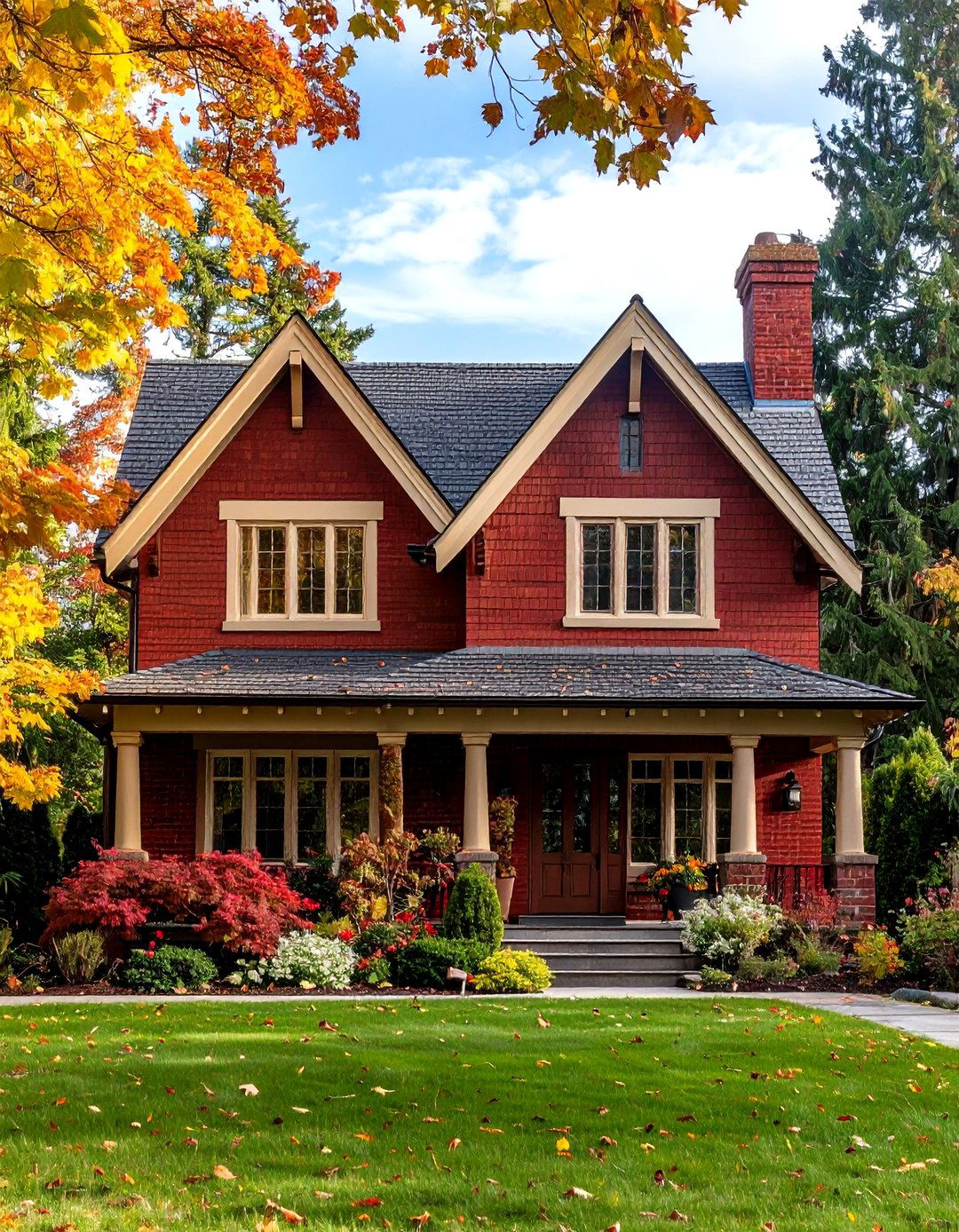
Behr’s ruby-hued Rumors headlines 2025 color decks and revives the idea of rich red exteriors beyond barns. Paint specialists suggest limiting a saturated ruby exterior house color to brick Colonials, Tudor half-timbers, or Craftsman bungalows where deep overhangs create natural shadow, preventing glare. Anchor the vibrant walls with charcoal shingles and creamy lintels so architectural details remain legible. Because reds fade faster than neutrals, invest in UV-resistant paint lines and plan a gentle power-wash yearly to remove chalk before it dulls the finish.
14. Olive Green Lends Mid-Century Charm
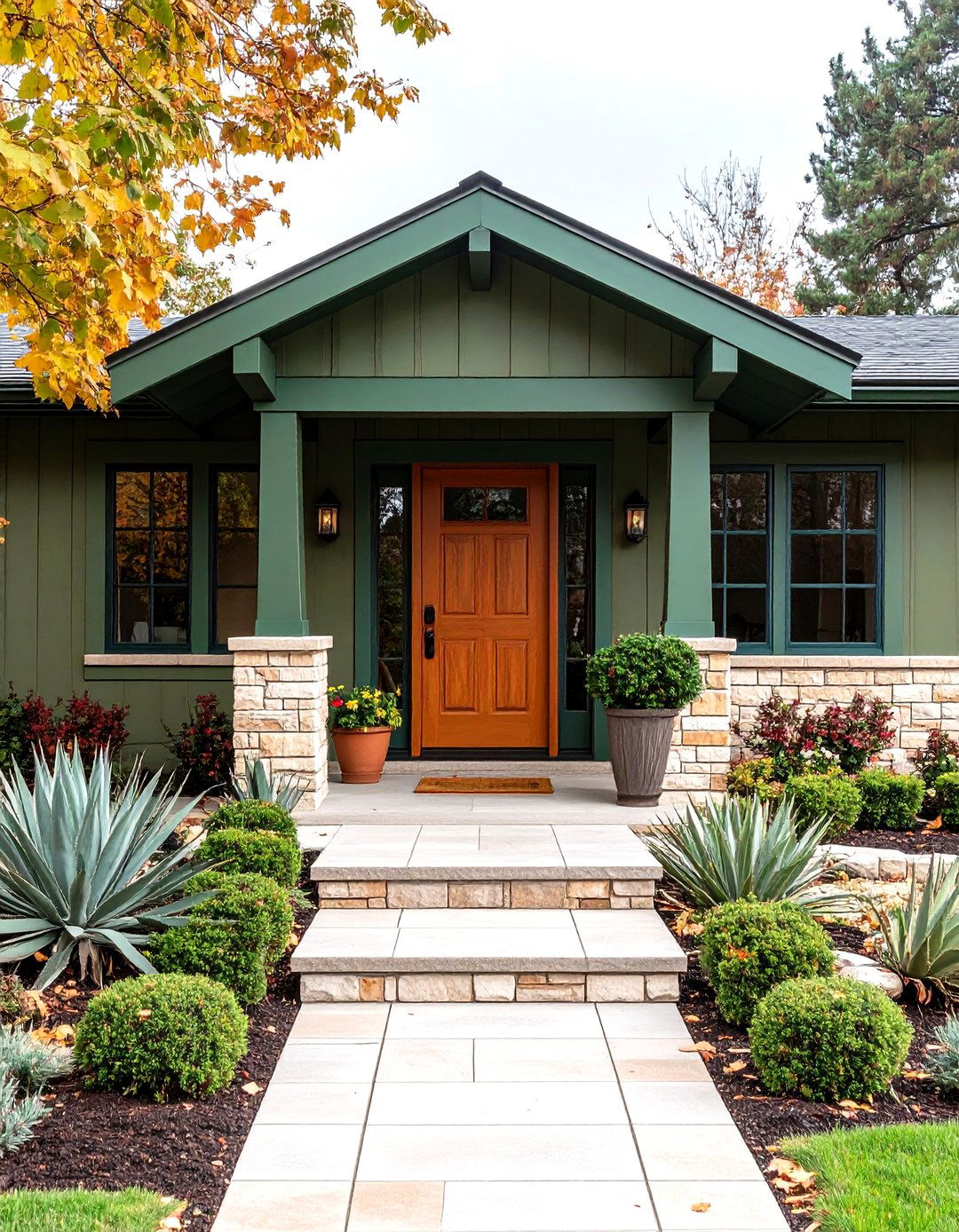
Bloggers like Renee Renovates swear by olive exterior house colors for mid-century homes, noting how muted green complements brick planters and breeze-block screens. Choose an olive with a gray backbone — Benjamin Moore’s Gloucester Sage, for instance — to avoid a militaristic vibe. Pair with burnt-orange front doors or teal window frames for playful retro punches. If your lot boasts drought-tolerant foliage, olive echoes agave and cactus tones beautifully, unifying landscape and architecture under one holistic palette.
15. Quiet Pastel Yellows Radiate Cheer
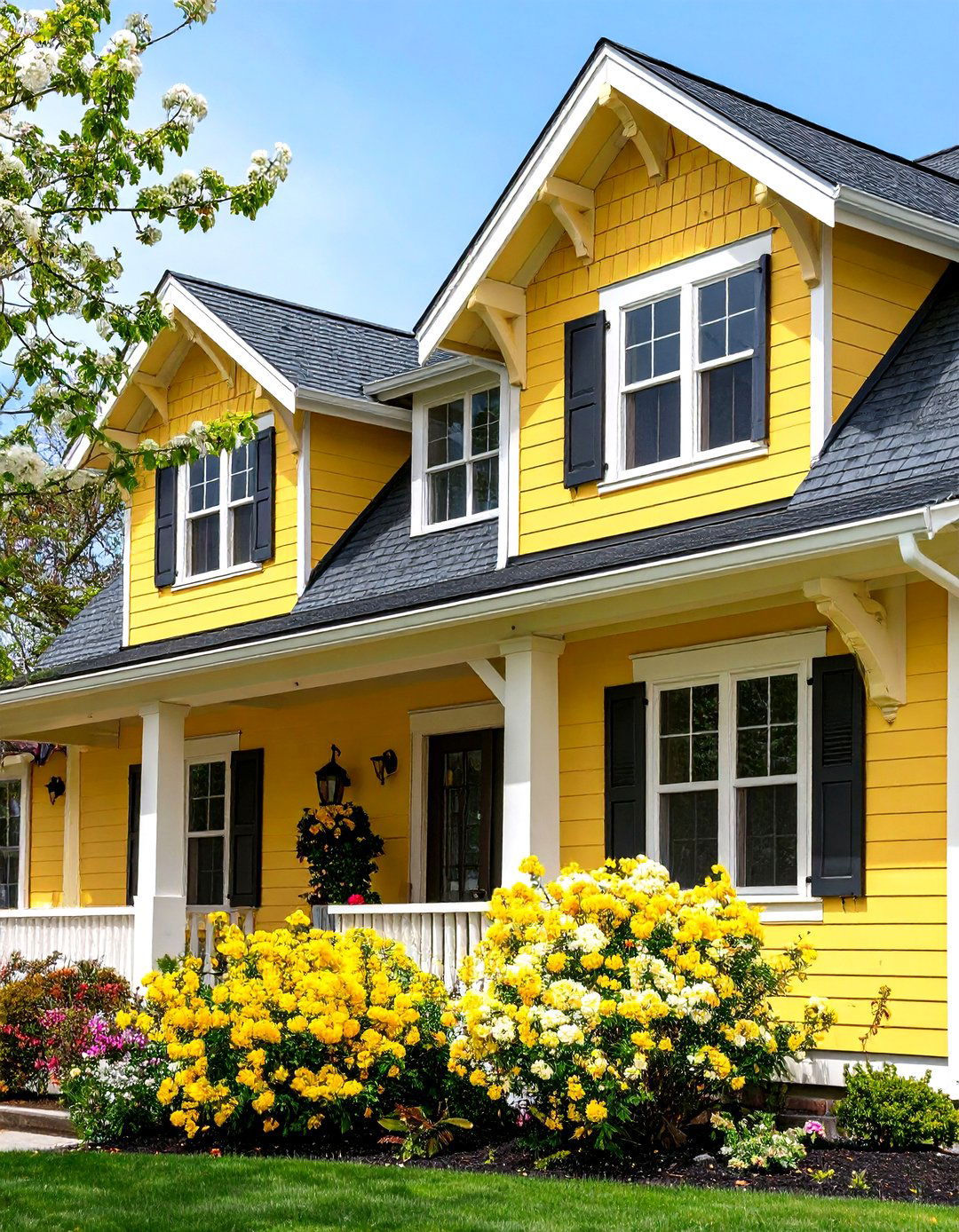
Soft buttercream exterior house colors capture sunlight and lift spirits without veering toward neon. Coastal palettes from Benjamin Moore propose subtle yellows like Windham Cream as warm companions to gray shingles or crisp white trim. On Victorian façades, accent carved brackets in slightly deeper gold for depth. Meanwhile, ranch homes benefit from pastel yellow siding offset by charcoal asphalt shingles, creating friendly balance in suburban streetscapes. Because pollen can discolor pale paint, rinse siding each spring and touch up any shaded mildew spots promptly.
16. Slate Gray Meets Industrial Copper
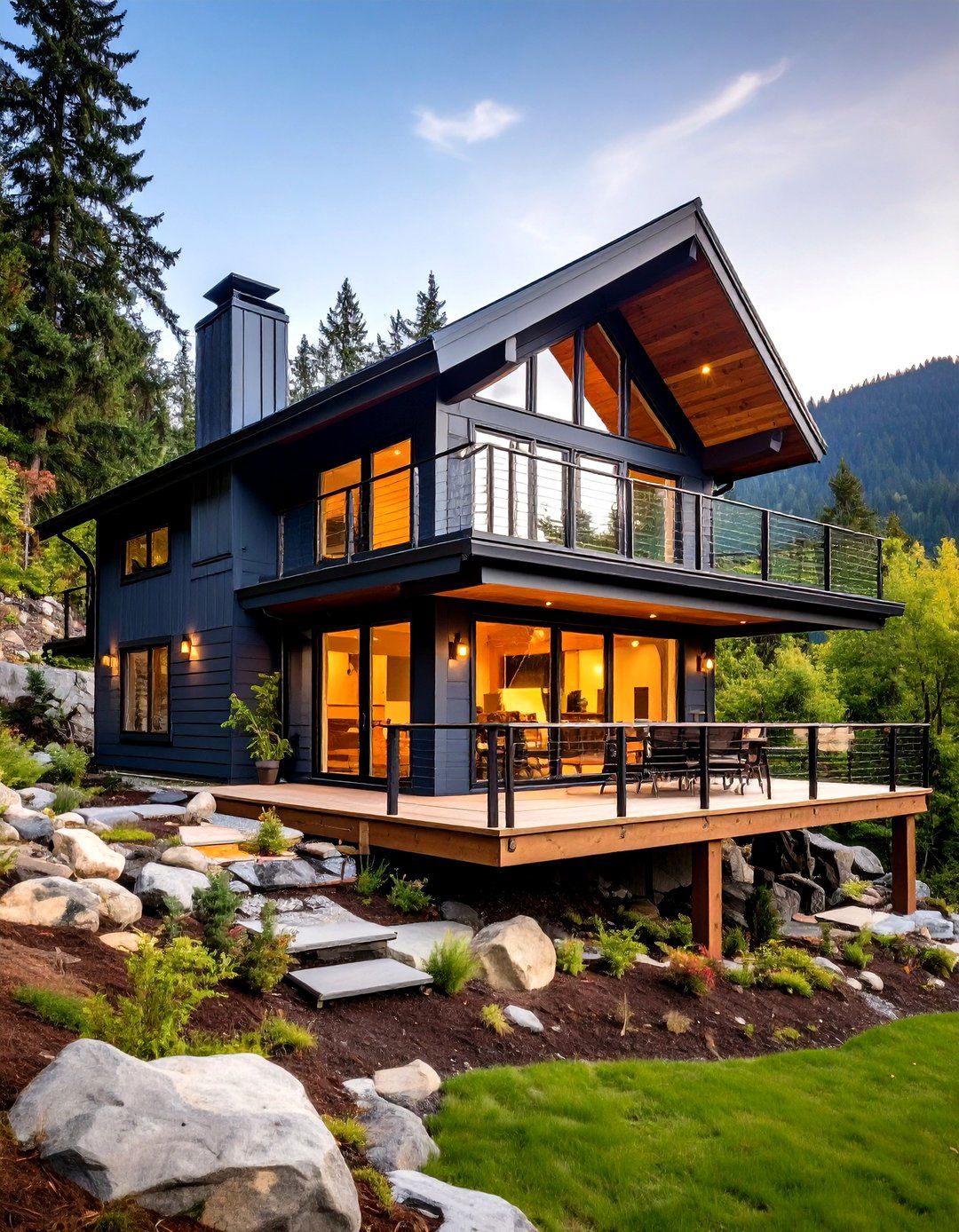
Slate-gray exterior house colors — Sherwin-Williams’ Peppercorn or Allura’s Black Fox — shine when paired with raw copper lighting that oxidizes into verdigris. The cool siding and warm metal create an industrial-meets-artisan vibe ideal for modern mountain cabins. Expand the theme with standing-seam copper roofs over bay windows and steel cable railings for a sleek yet tactile façade. Because slate gray can look flat on cloudy days, break planes with horizontal cedar screens or stone ledgers to add texture.
17. Cream & Natural Wood Modernize Farmhouses
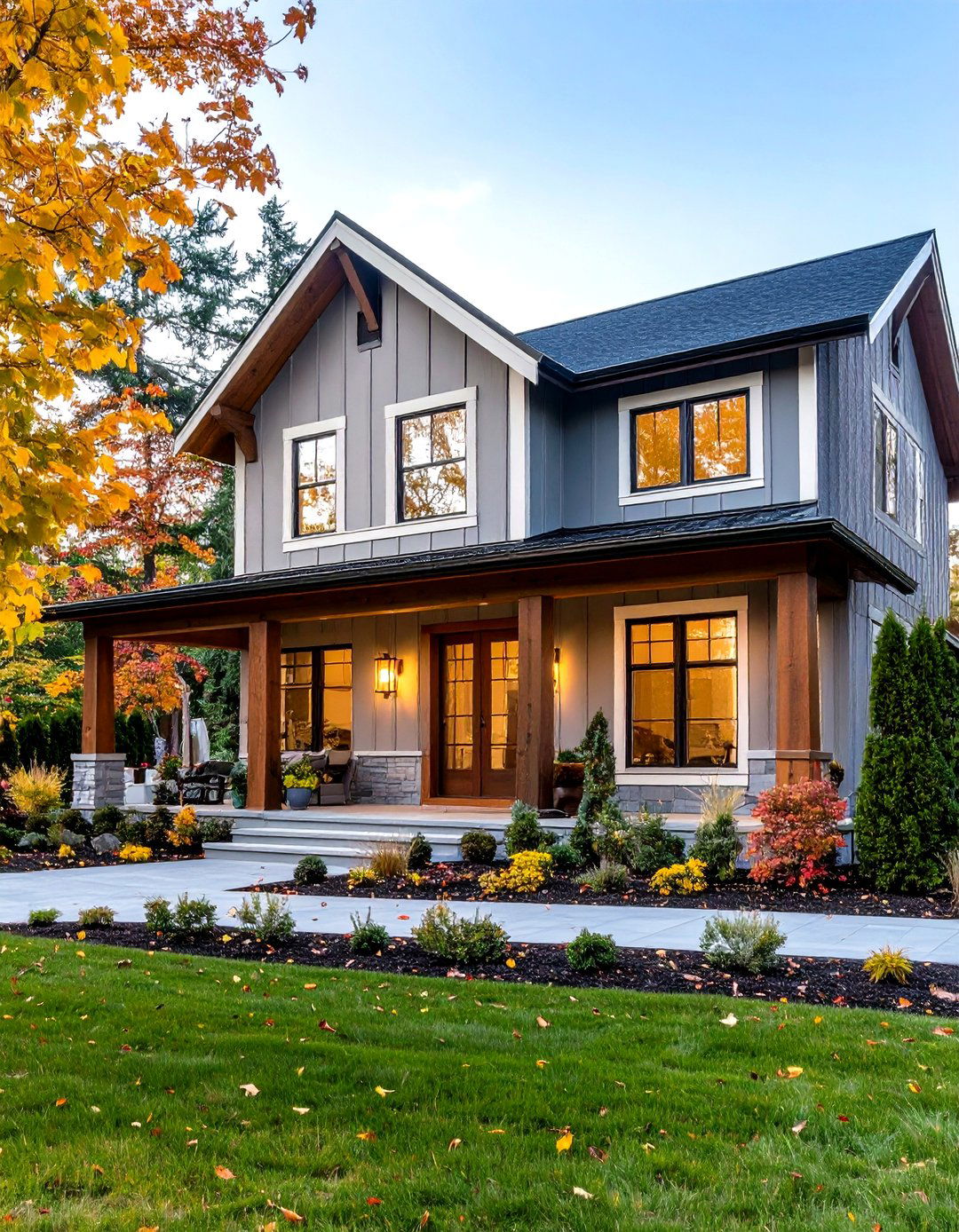
Farmhouse enthusiasts seeking something softer than high-contrast white-and-black exteriors can look to pearl-gray siding, arctic-white trim, and dark-stained cedar accents highlighted in The Curb Appeal Co. ’s alternative farmhouse schemes. The restrained palette feels fresh yet classic, allowing porches and gables to shine without visual overload. Seal cedar elements with matte clear coat so grain patterns stay visible against the creamy siding. Finish with oversized gooseneck sconces in warm brass that bridge rustic and modern aesthetics.
18. Blue-Gray Neutrals Deliver Coastal-Modern Fusion
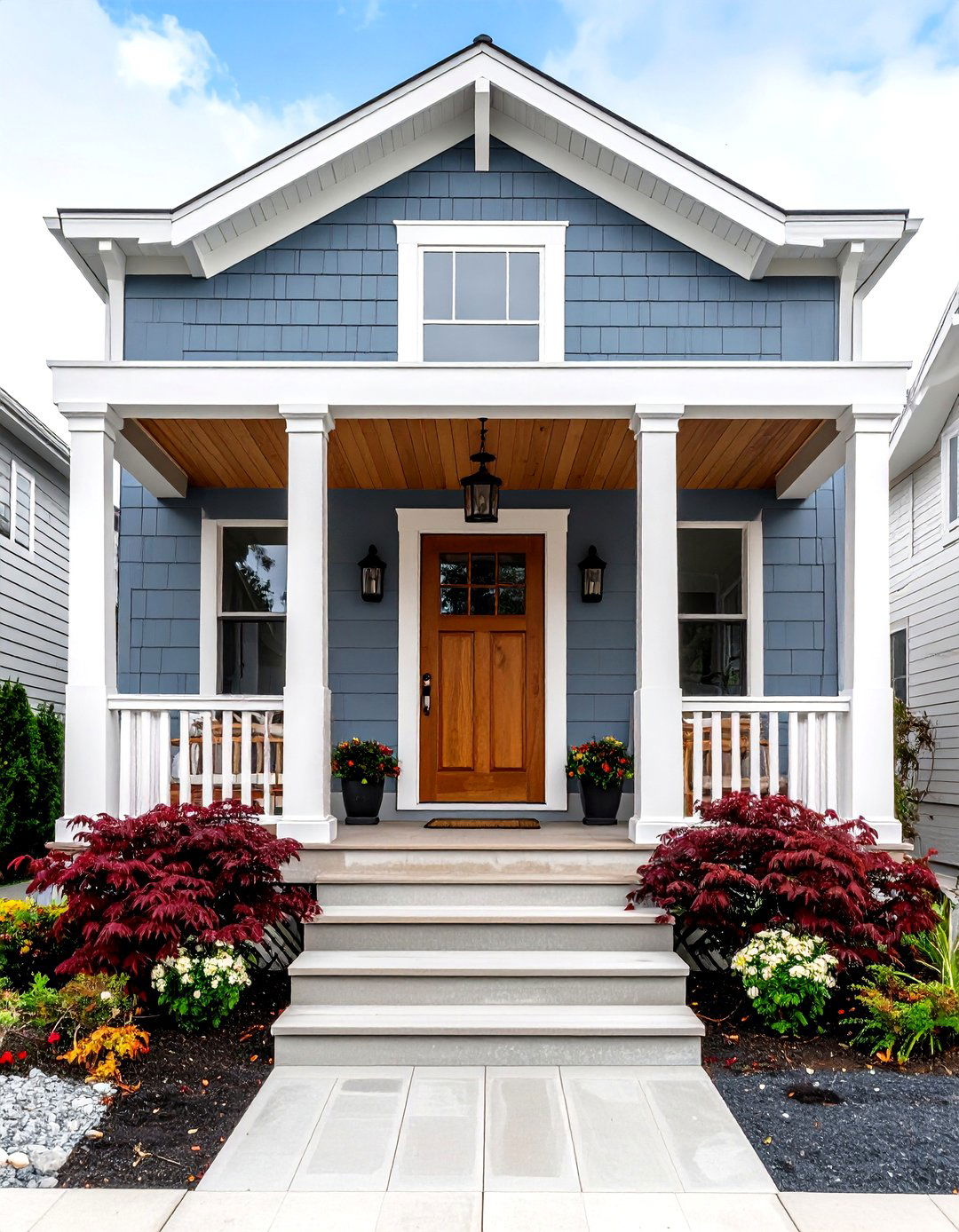
Sherwin-Williams’ Colormix 2025 capsules include stormy blue-grays that straddle coastal charm and contemporary chic. When applied as an exterior house color, these hues shift from steel to slate as daylight moves, giving façades dynamic depth. Pair with black-metal porch columns and teak furniture for a look that feels equally at home in beach towns or urban infill lots. To avoid a cold cast, select warm white windows and plant burgundy Japanese maples that intensify the paint’s subtle blue undertone.
19. Pastel Peach Softens Harsh Sunlight
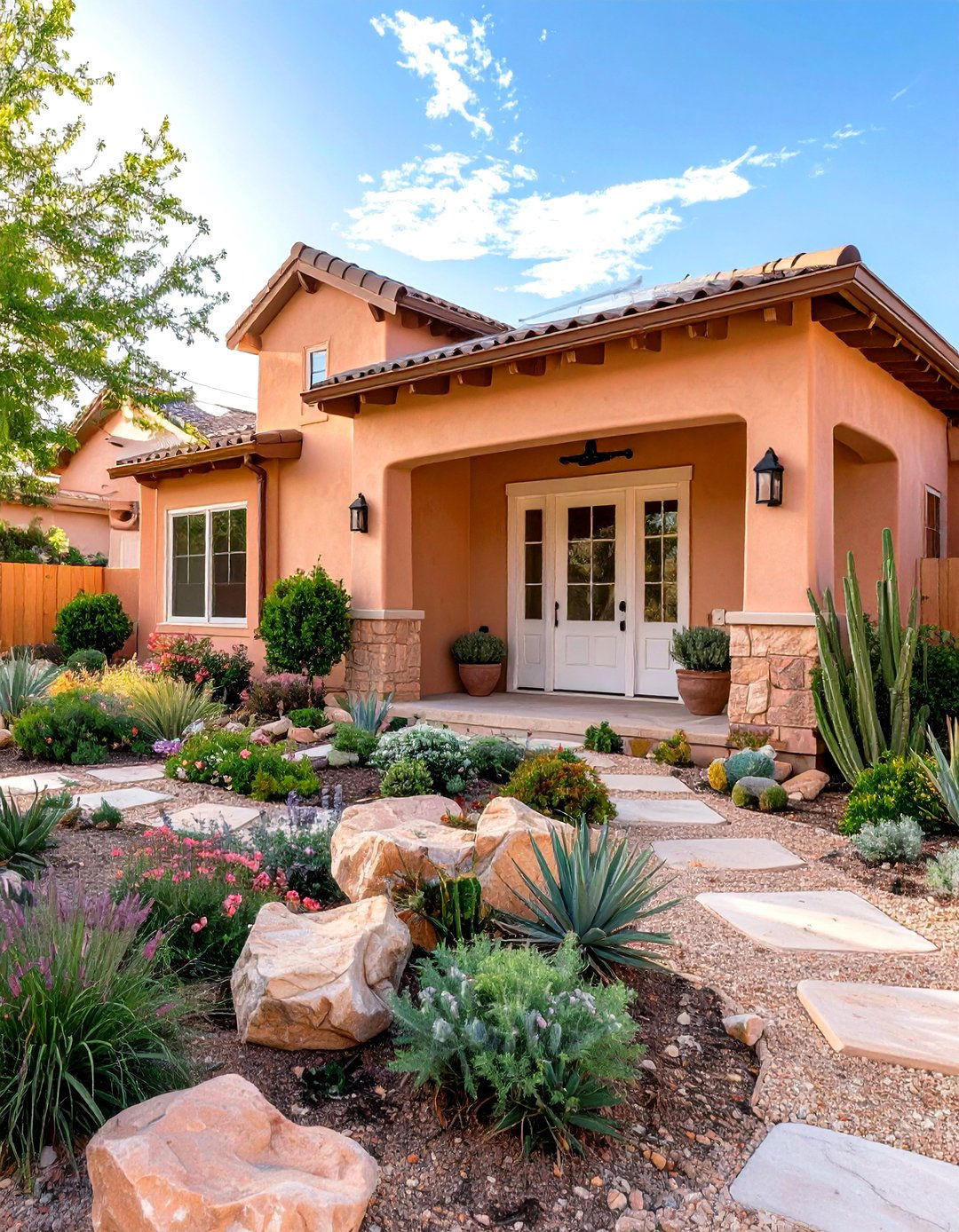
In hot, arid regions, light pastel peach exterior house colors diffuse intense sun while still offering personality beyond beige. Terracotta-inspired palettes on Pinterest reveal softer coral tints that reflect heat and play nicely with white or bronze trim. Choose a high-LRV (light-reflectance value) formula to boost energy efficiency by bouncing solar rays. Because subtle peaches can appear nearly cream in bright noon light, sample against landscaping stones for accurate comparison.
20. Desert Sand Honors Southwestern Heritage
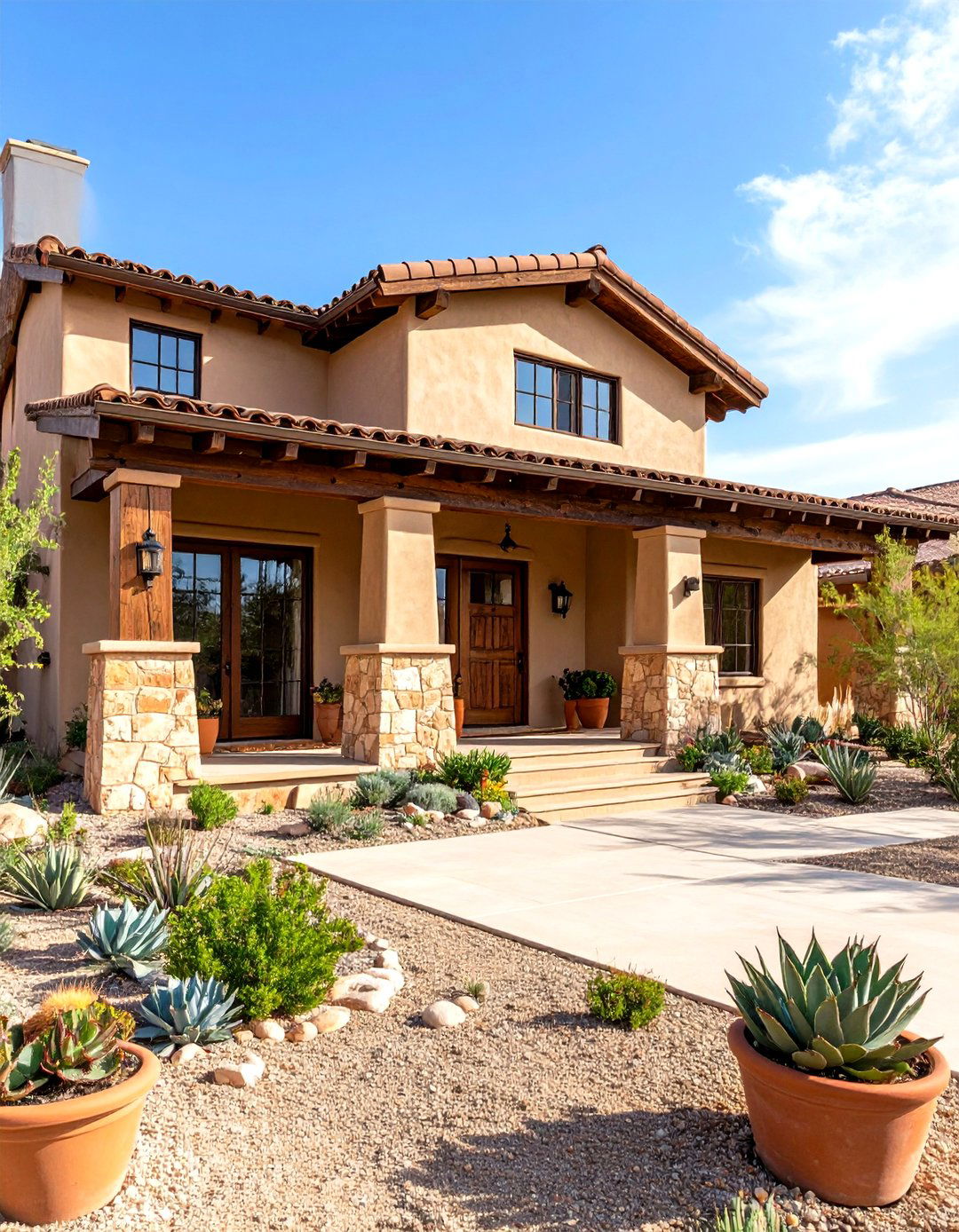
Sand-toned exterior house colors — think khaki infused with a touch of gray — feel organic against xeriscape yards. Earth-tone experts at Brick&Batten suggest pairing sand siding with deep pumpkin shutters and weathered-oak beams for layered warmth. These hues excel on stucco or fiber-cement board where subtle texture mimics adobe. Finish with iron strap hinges and terracotta pots overflowing with succulents for cohesive Southwestern character. Because sand colors hide dust, they require less frequent washing — an added bonus in windy deserts.
21. Moody Teal Offers Jewel-Box Drama
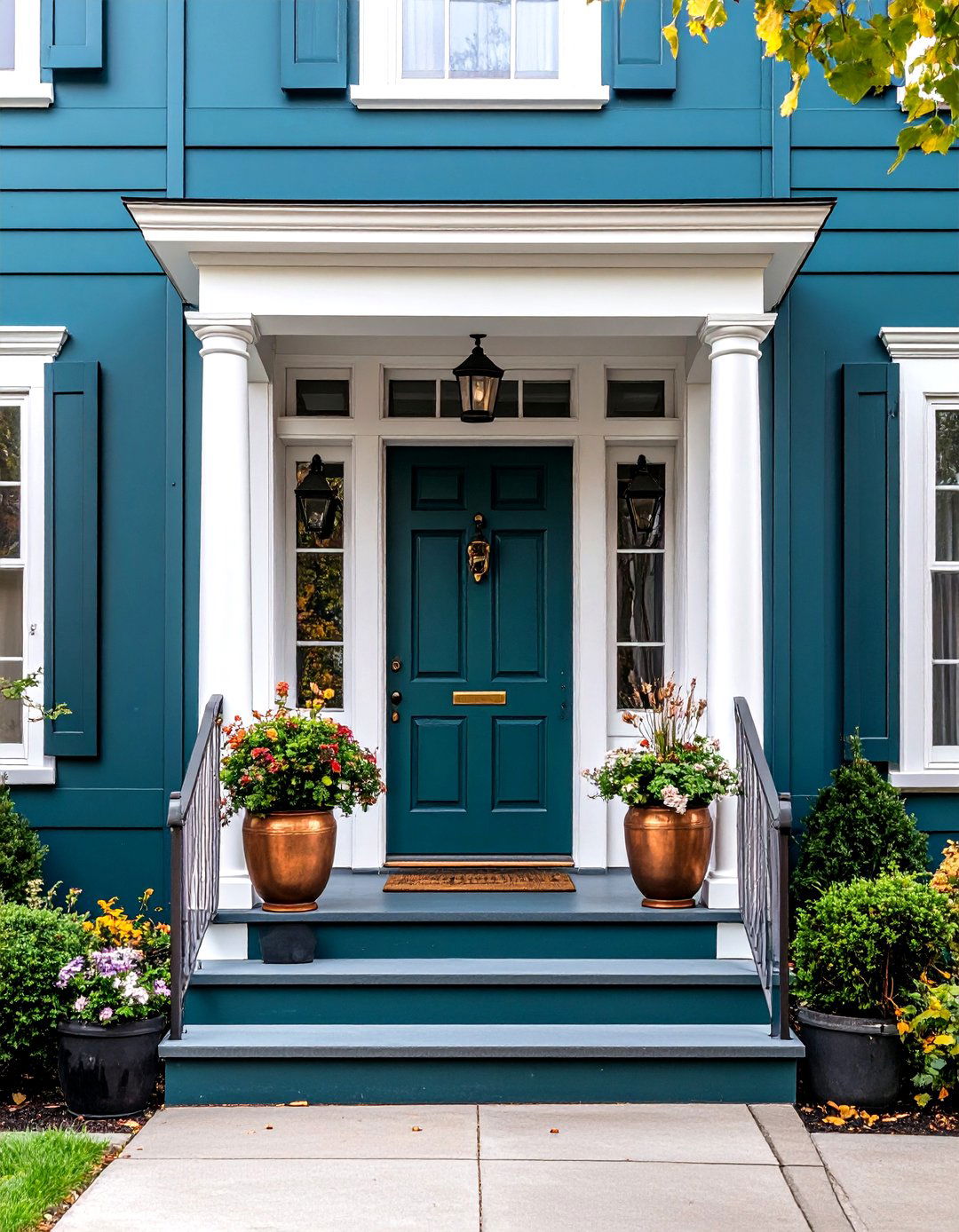
Sherwin-Williams’ 2025 Color Capsule features brooding teals perfect for homeowners craving a jewel-box exterior house color that still feels grounded. Teal works wonders on narrow façades, visually widening them when paired with bright white vertical trim. Copper porch lights and hand-hammered planters amplify teal’s richness without tipping into kitsch. In snowy climates, dark teals stand out beautifully against a winter backdrop while resisting grime better than lighter blues.
22. Graphic Black-and-White Contrast Stays Iconic
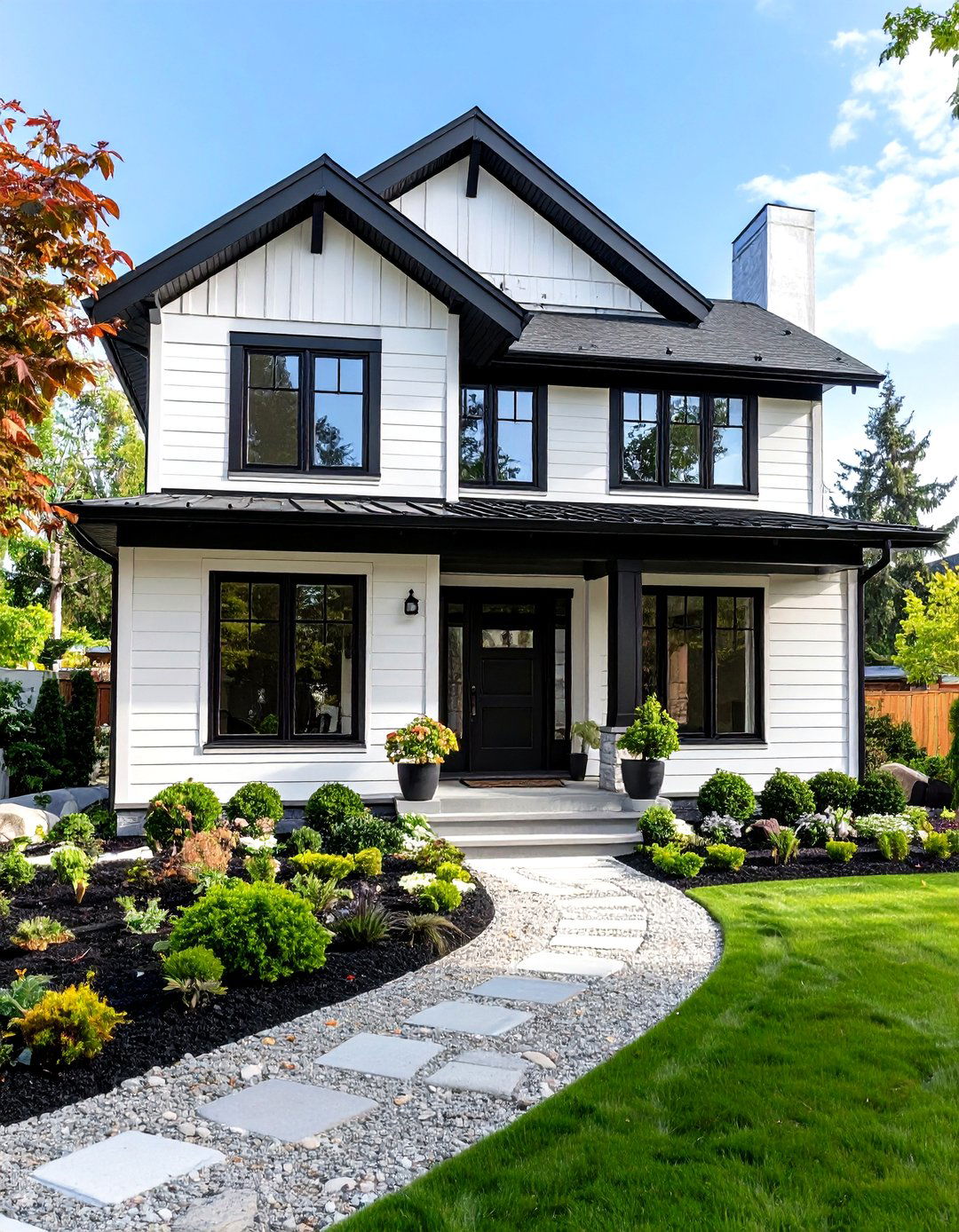
While all-black homes rise in popularity, the classic white exterior house color punctuated by jet-black window frames remains a show-stopper. Trend commentators observe that swapping traditional gloss for satin or matte finishes updates the pairing instantly. Opt for black gutters and downspouts too, so the eye flows uninterrupted from fascia to foundation. Keep landscaping monochrome — white hydrangeas, black mulch — to reinforce the scheme. Touch up white trim yearly; dirt stands out sharply against such high contrast.
23. Espresso Brown Evokes Cabin Comfort
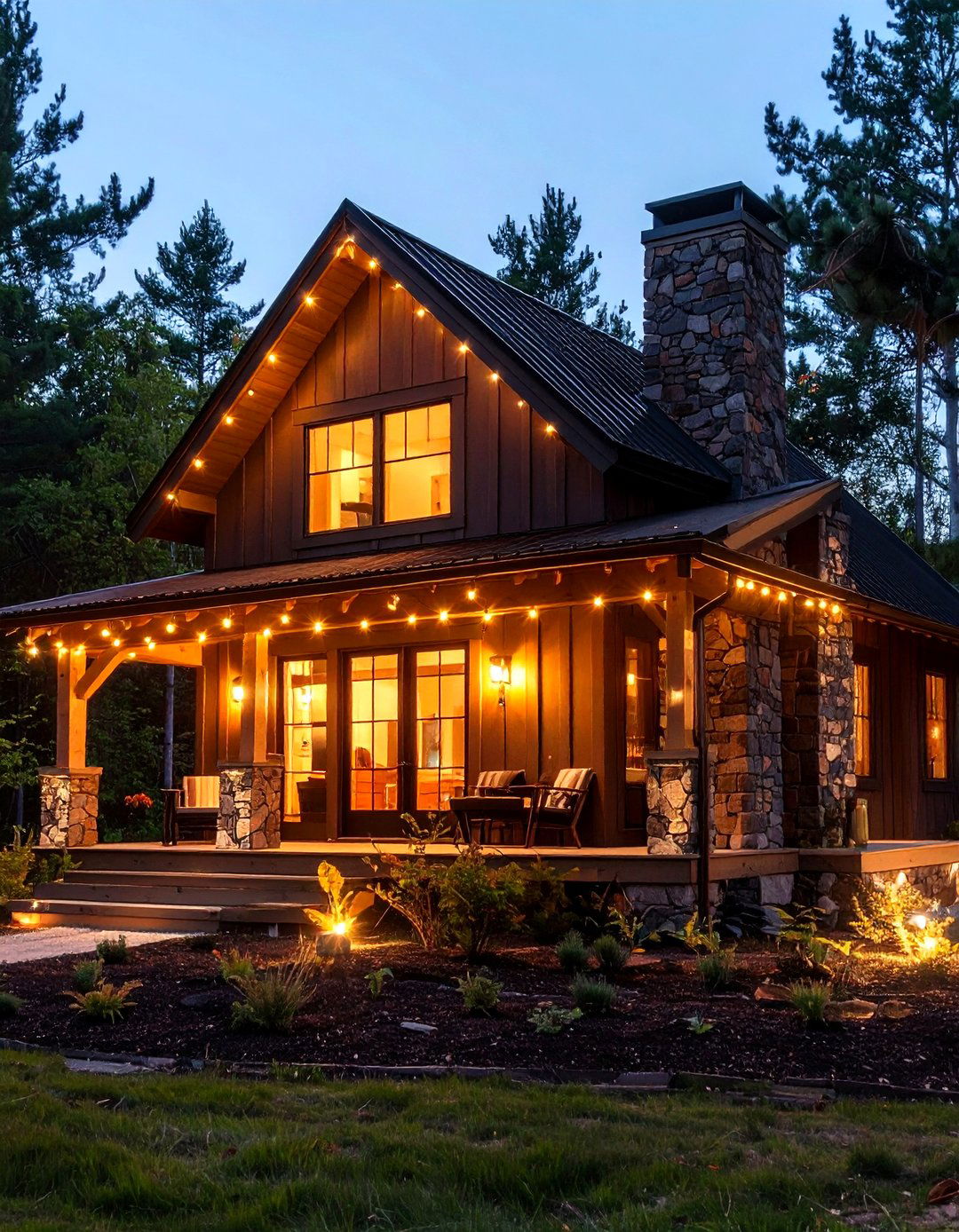
For wooded lots, rich espresso exterior house colors blend man-made structures with tree bark, creating a retreat-like ambiance. Allura champions brown-black hybrids like Black Fox for depth without flatness. Complement with stone chimneys and oversized picture windows trimmed in warm beige. Because dark browns can absorb moisture, select a premium water-repellent paint line and ensure gutters route runoff far from siding. Warm outdoor string lights soften the hue at dusk, turning the house into a glowing lodge.
24. Clay Pink Adds Subtle Whimsy
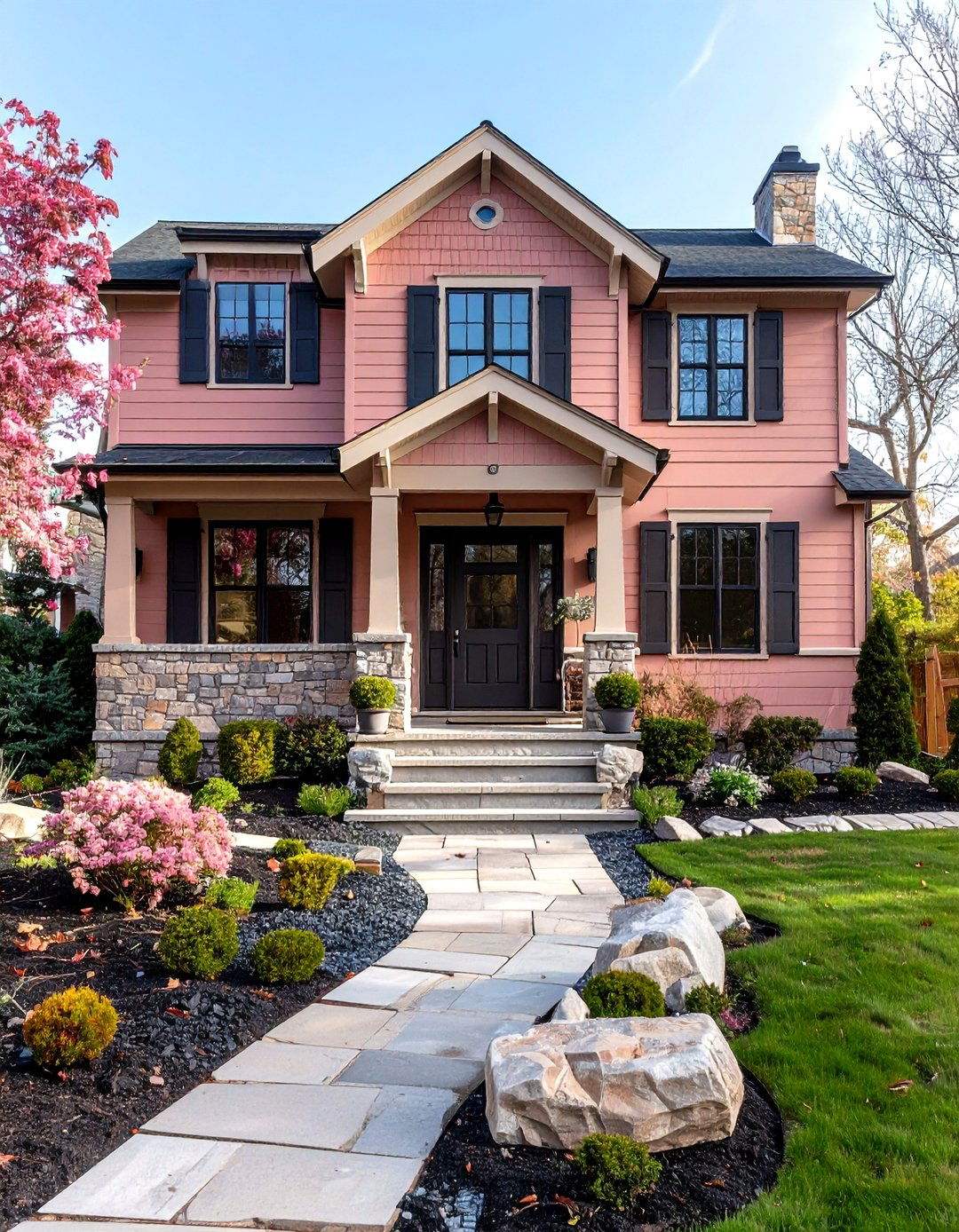
Clay-infused pink exterior house colors, lighter than terracotta yet earthier than pastel rose, provide an unexpectedly sophisticated twist. Pinterest boards devoted to terracotta exteriors show how muted pink siding coupled with charcoal shutters reads modern, not sugary. Use light-gray stone foundations to keep the palette grounded and resist UV fade with a top-tier acrylic formula. In neighborhoods dominated by beige, clay pink offers individuality while still harmonizing with neutral streetscapes.
25. Crisp Pure White Remains Timeless
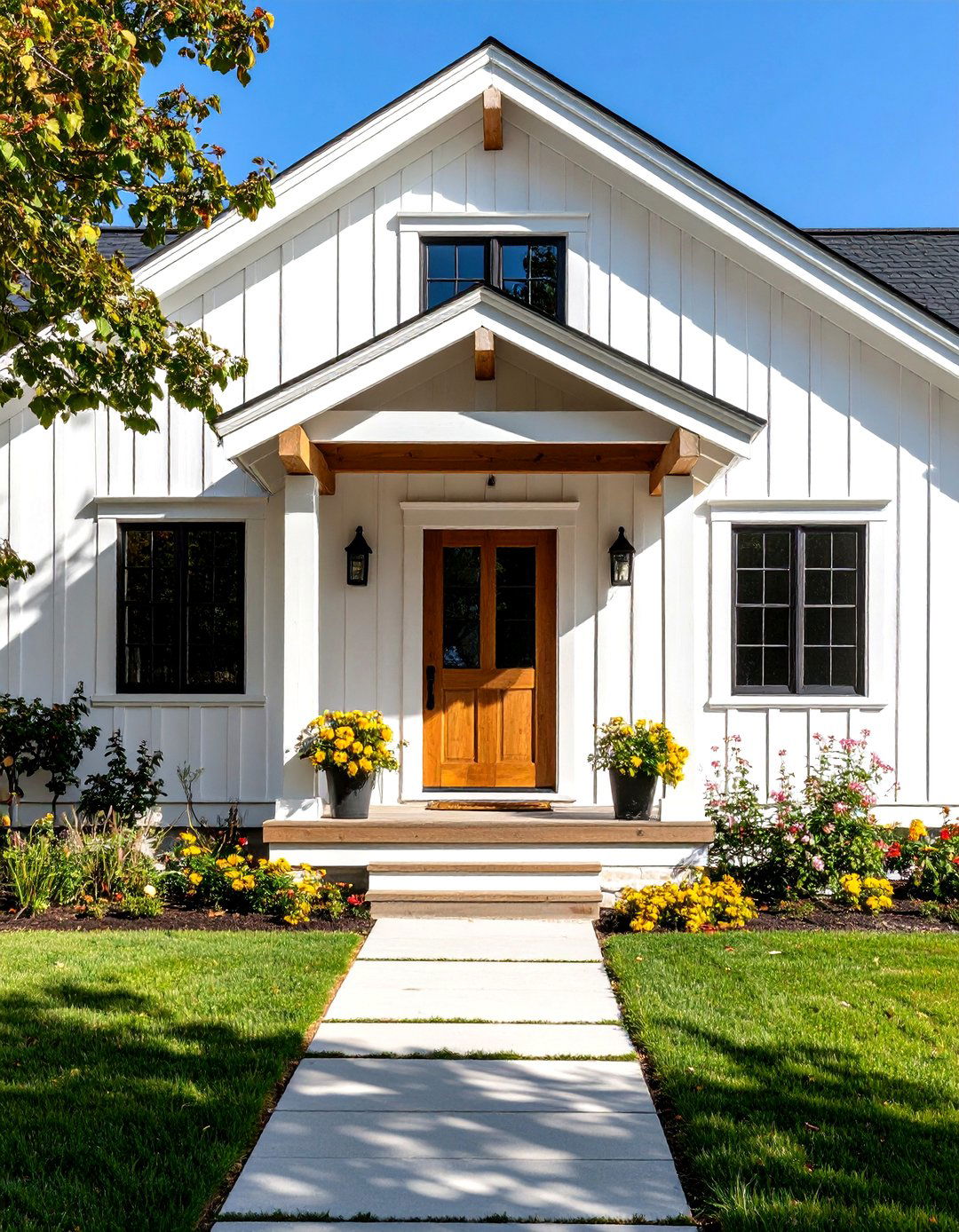
Finally, pure white exterior house colors — think Sherwin-Williams Extra White — endure because they highlight architectural shadow lines and adapt to virtually any accent scheme. Pair with natural wood beams for Scandinavian minimalism or bold primary doors for contemporary flair. Yet white demands meticulous prep: pressure-wash, caulk gaps, and use a high-hide primer to prevent flashing. Glossy or semi-gloss trims resist dirt and caulk stains better than flat finishes. Annual touch-ups on high-traffic corners keep the look pristine and ensure the brightest curb appeal on the block.
Conclusion:
Whether you gravitate toward nature-inspired sages, sun-drenched terracottas, or dramatic charcoals, today’s exterior house colors invite you to showcase personality while respecting architecture and climate. Trend reports from leading paint brands underscore a shift to grounded, nuanced hues that harmonize with landscaping and sustainability goals, while timeless whites and navy blues still anchor the palette for enduring elegance. By sampling generously, matching undertones to fixed elements, and investing in quality, UV-resistant formulas, you’ll craft an exterior that delights both you and future buyers — proof that the perfect paint choice is equal parts creativity, strategy, and everyday joy.



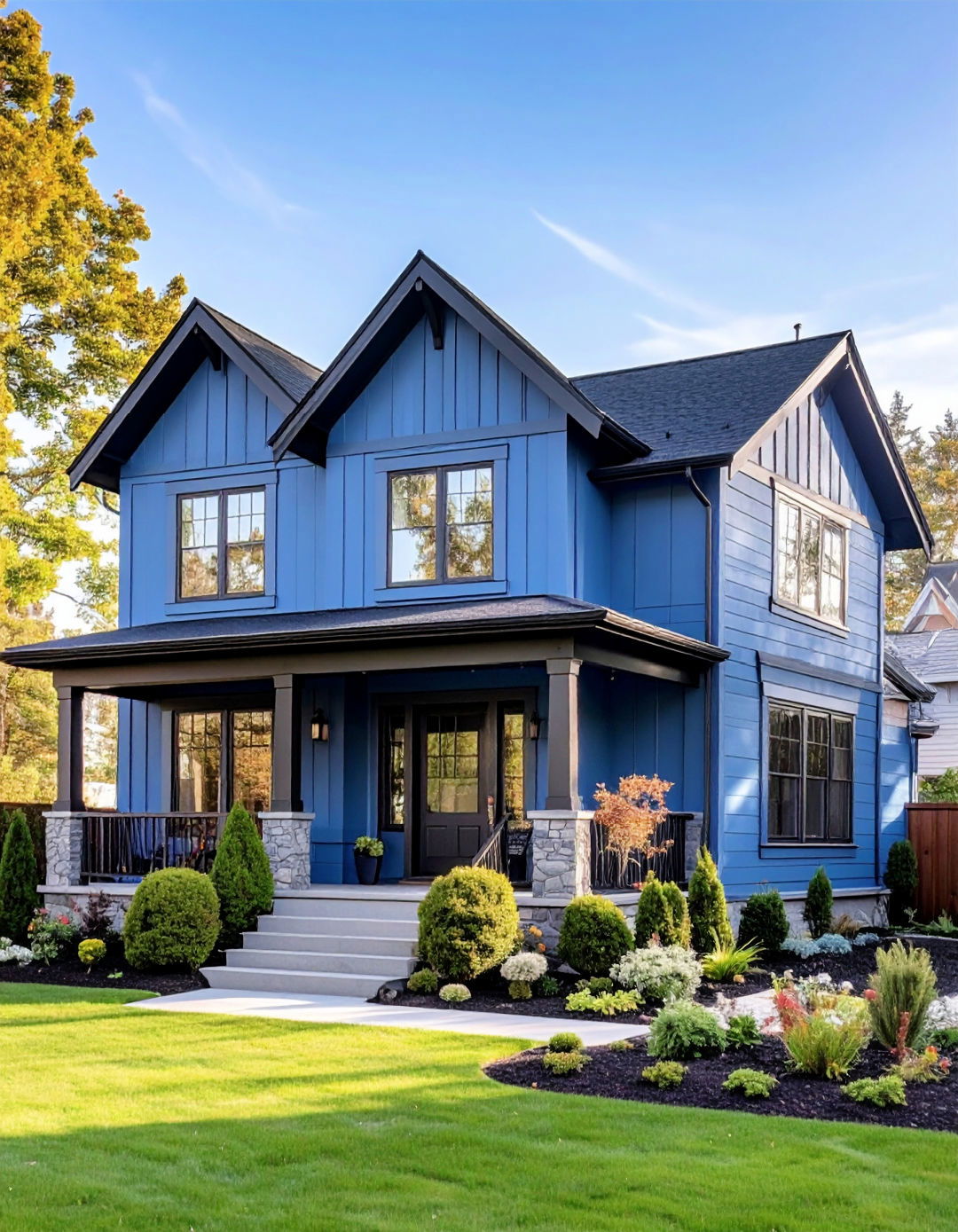

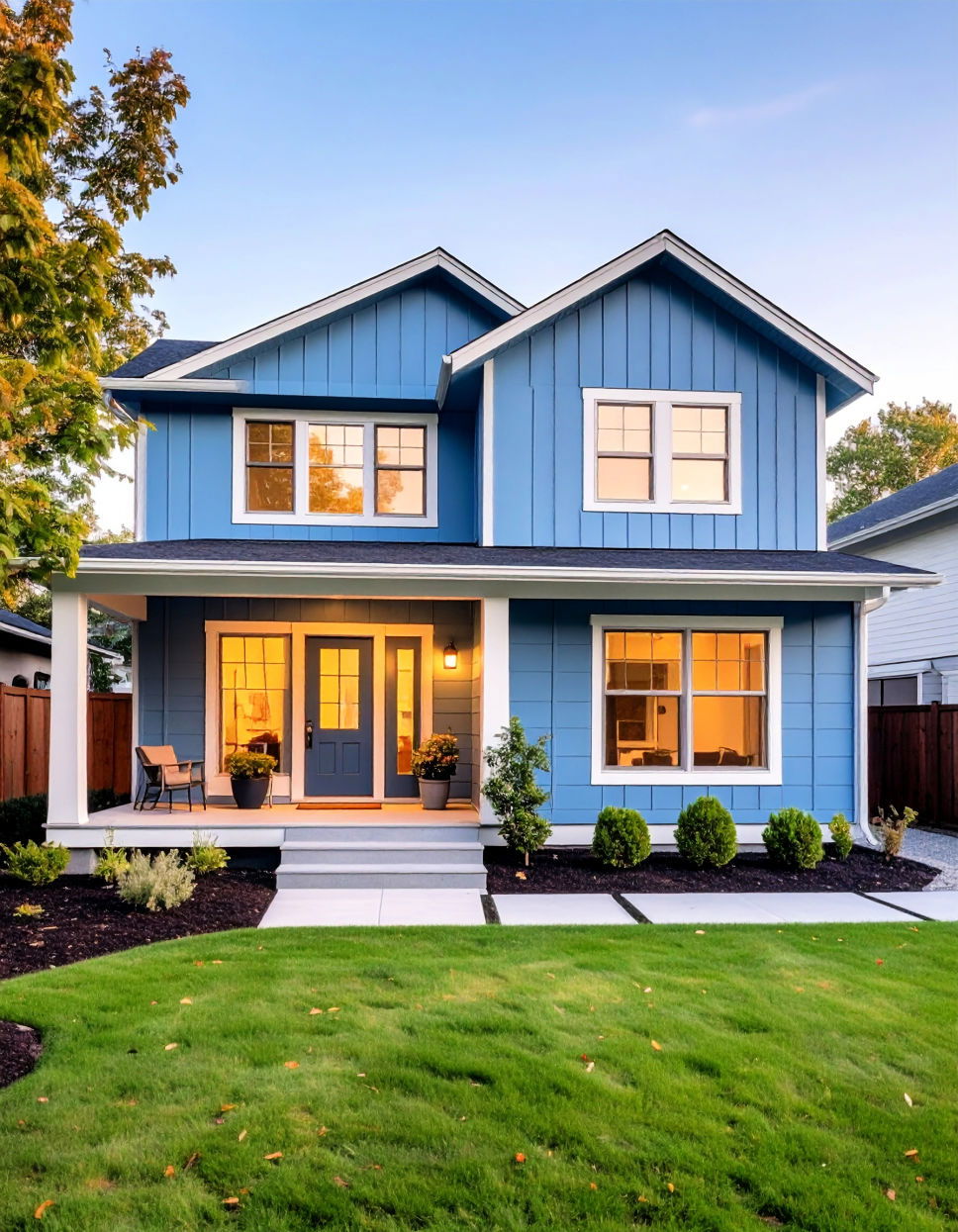
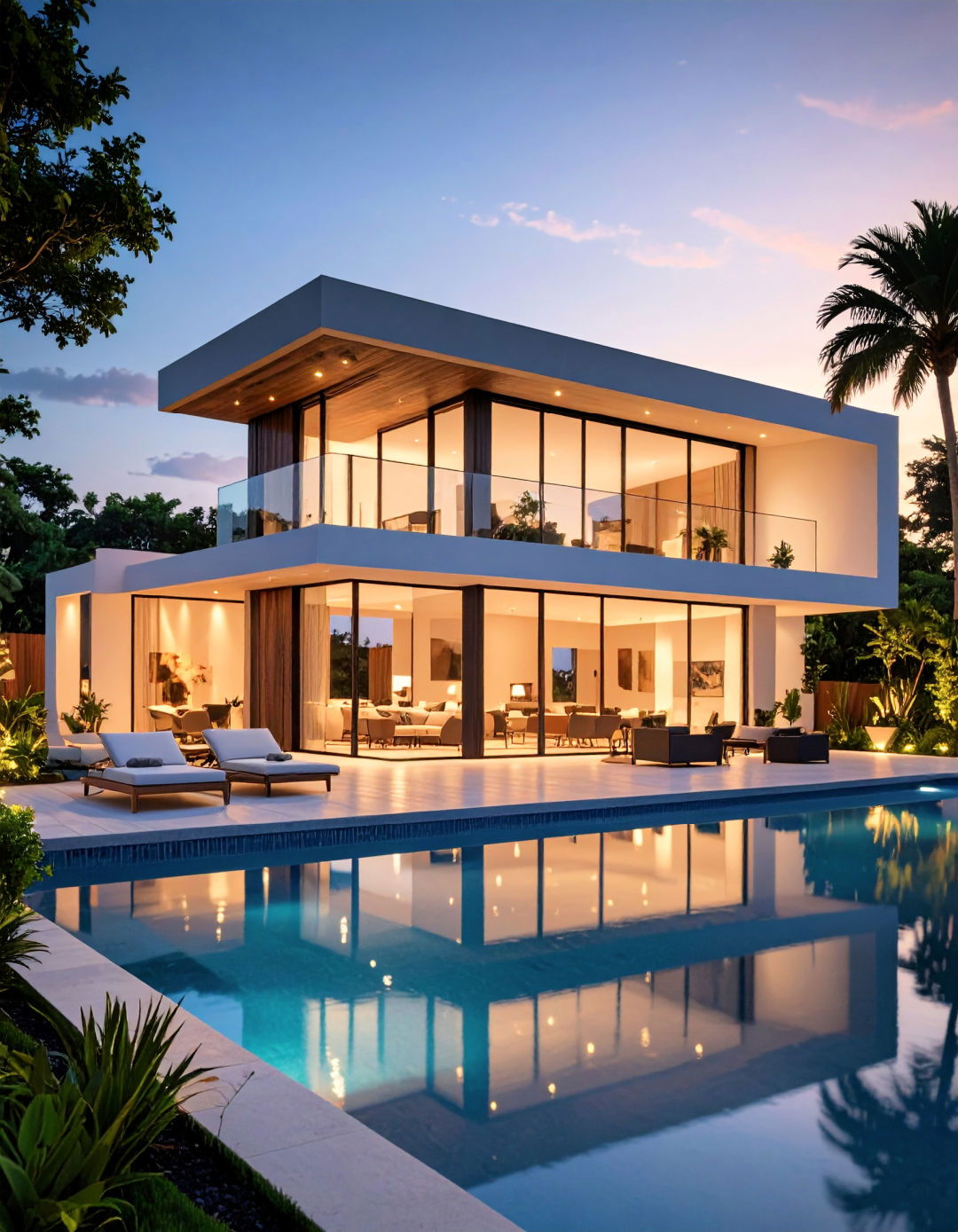
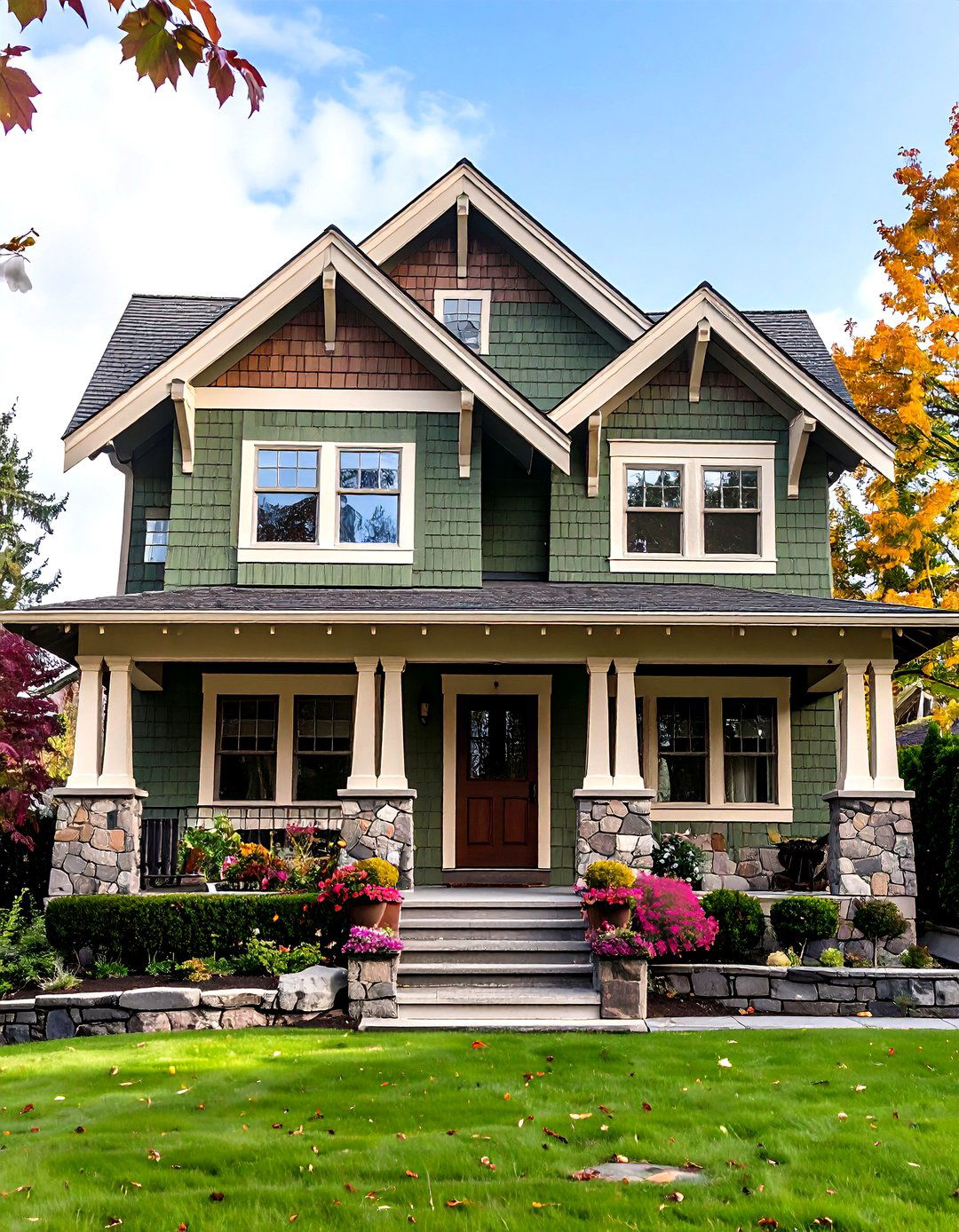
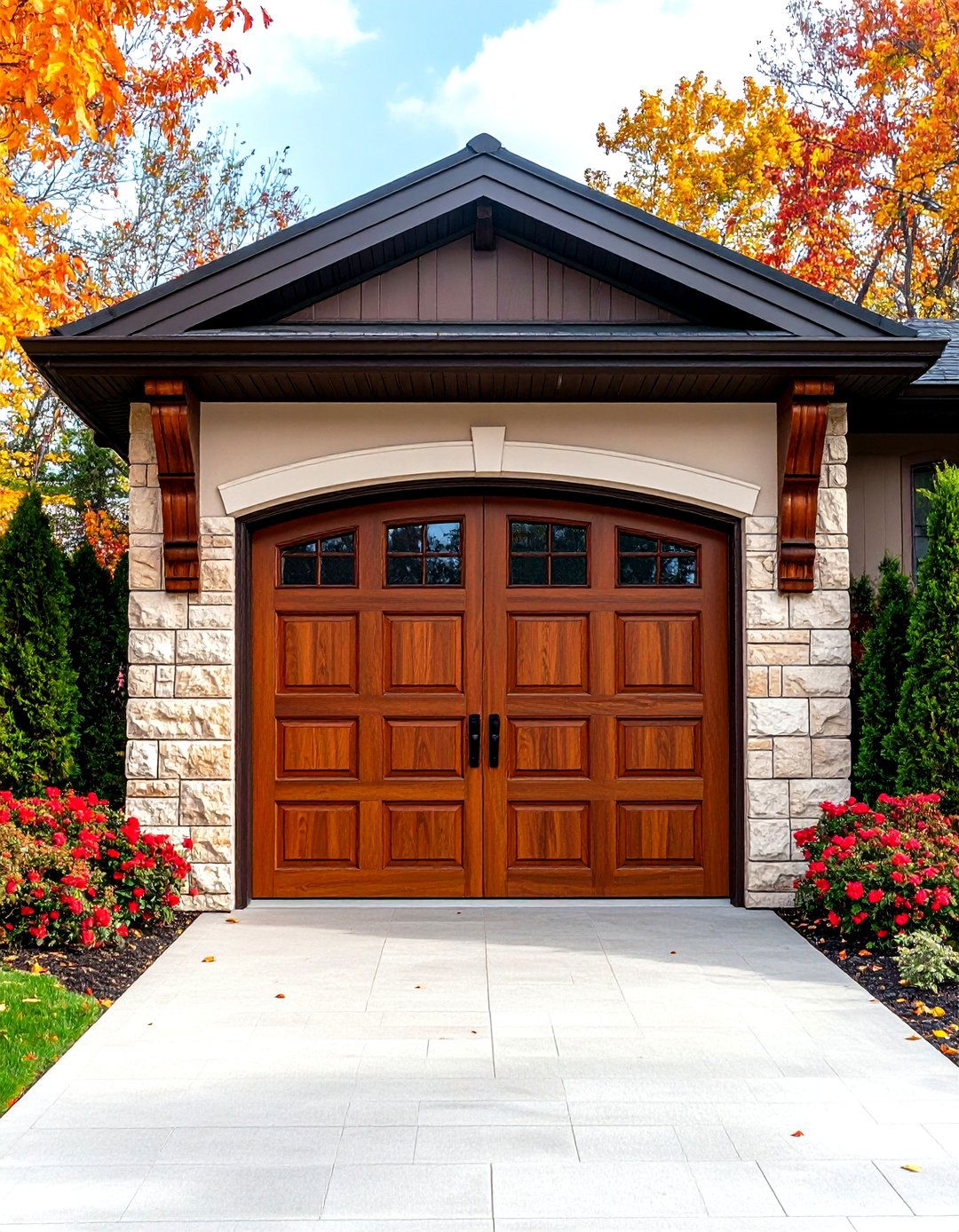
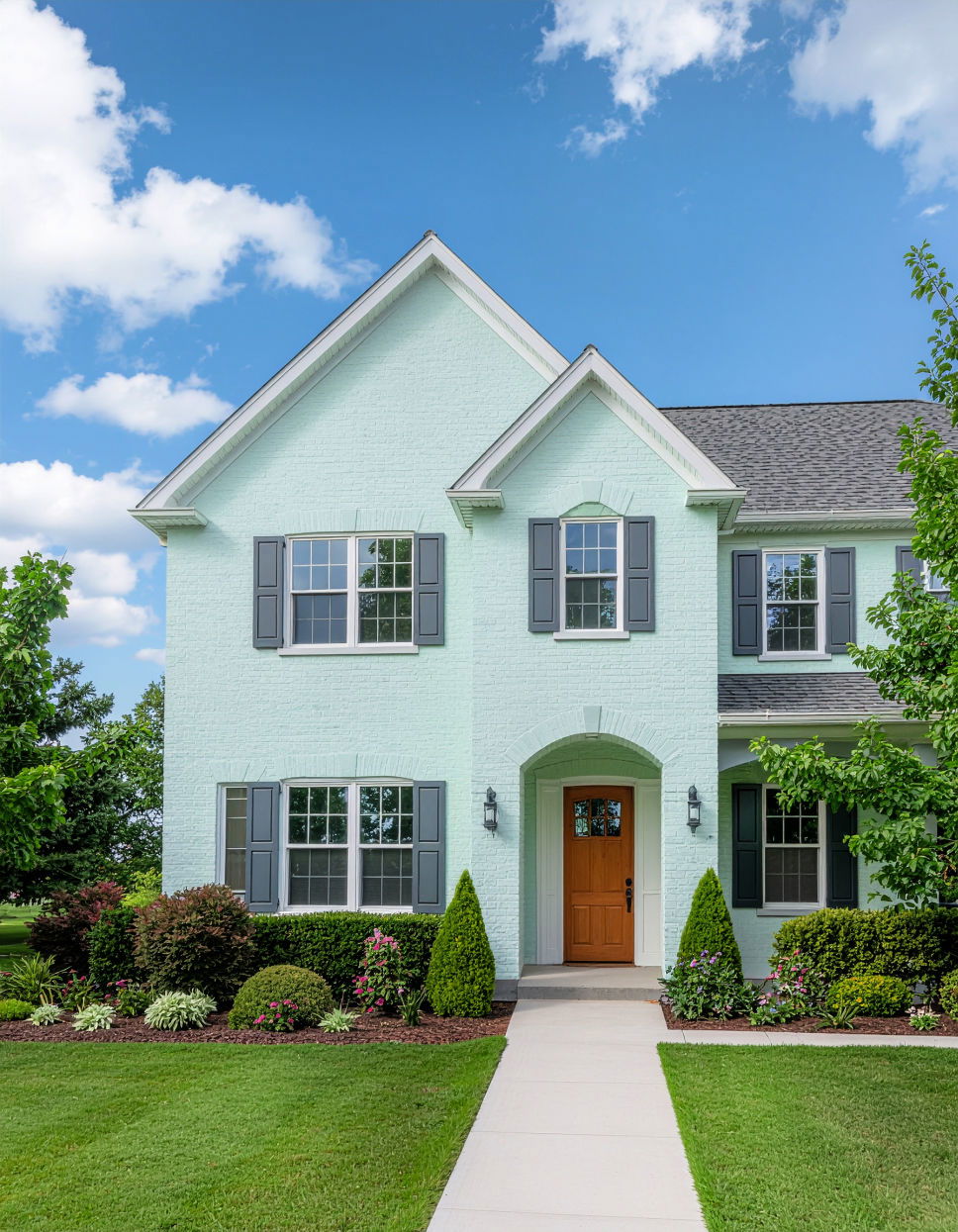
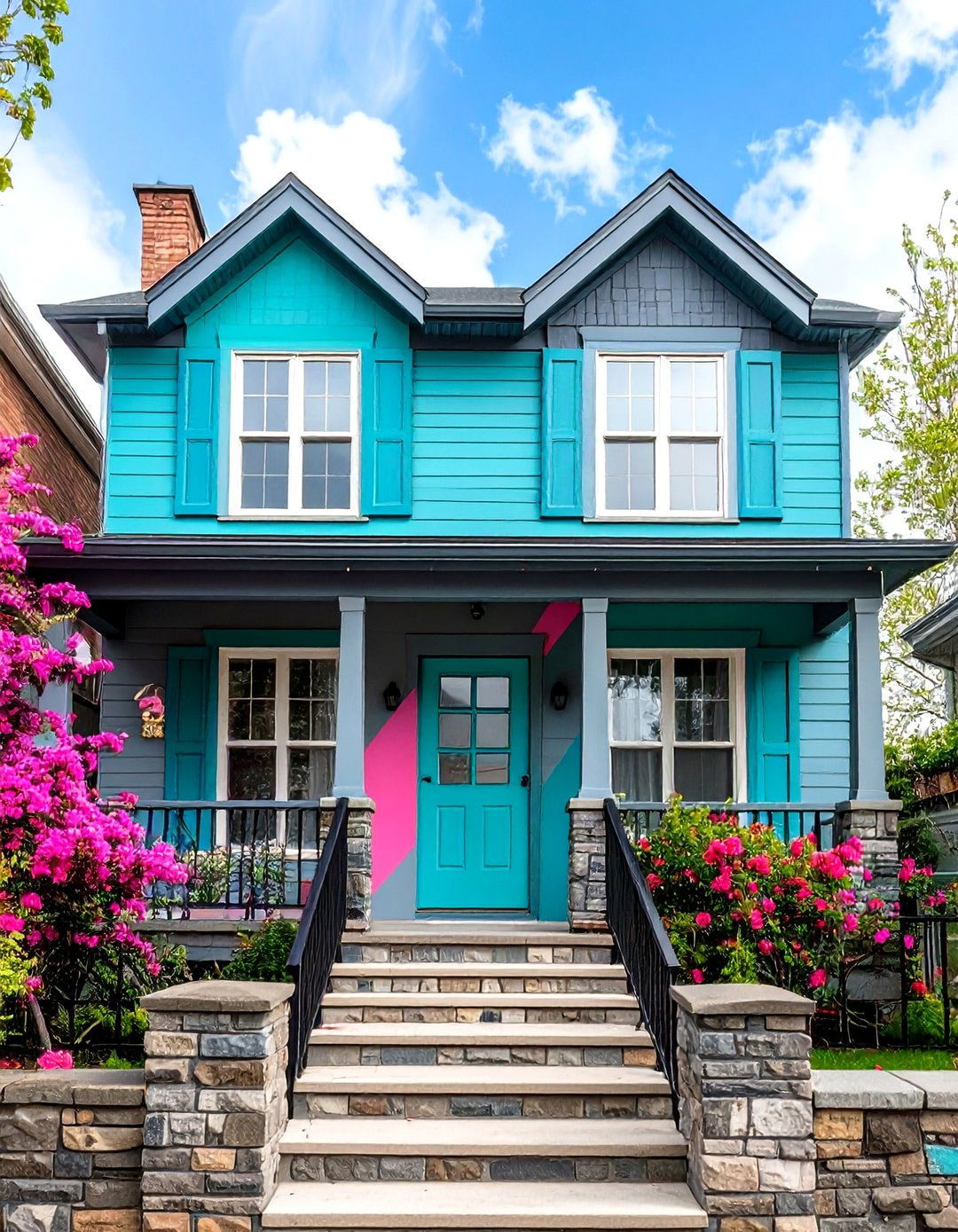

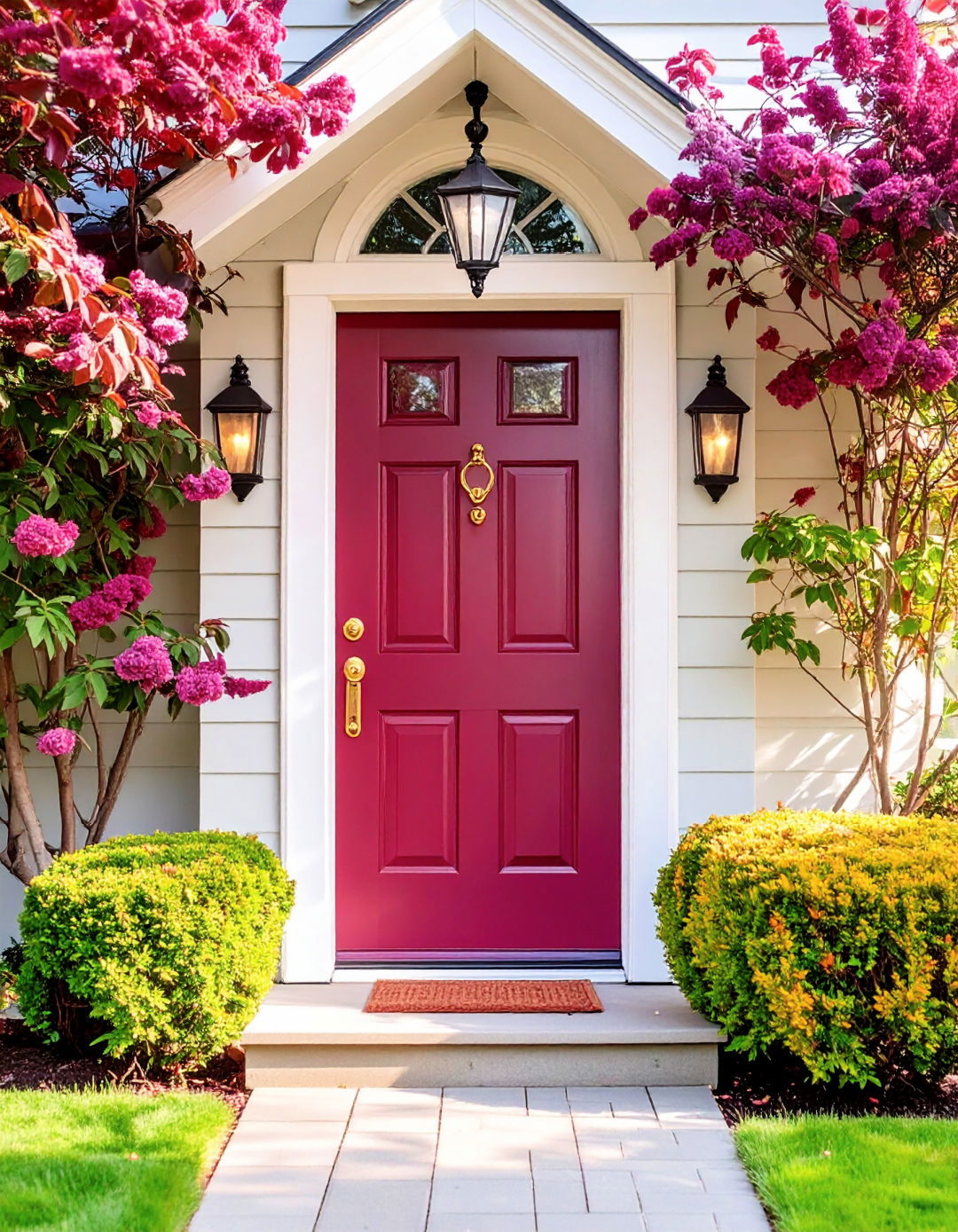
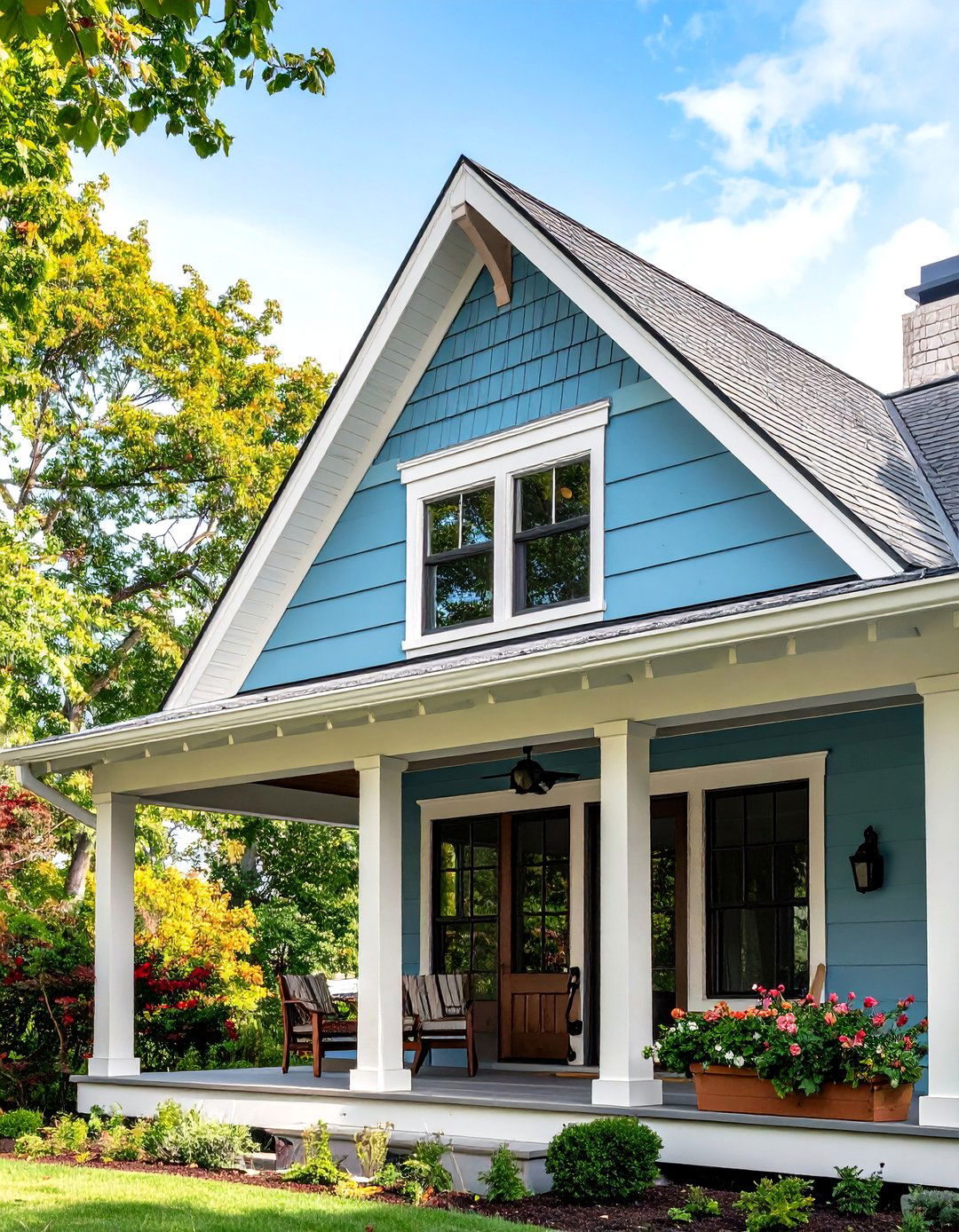
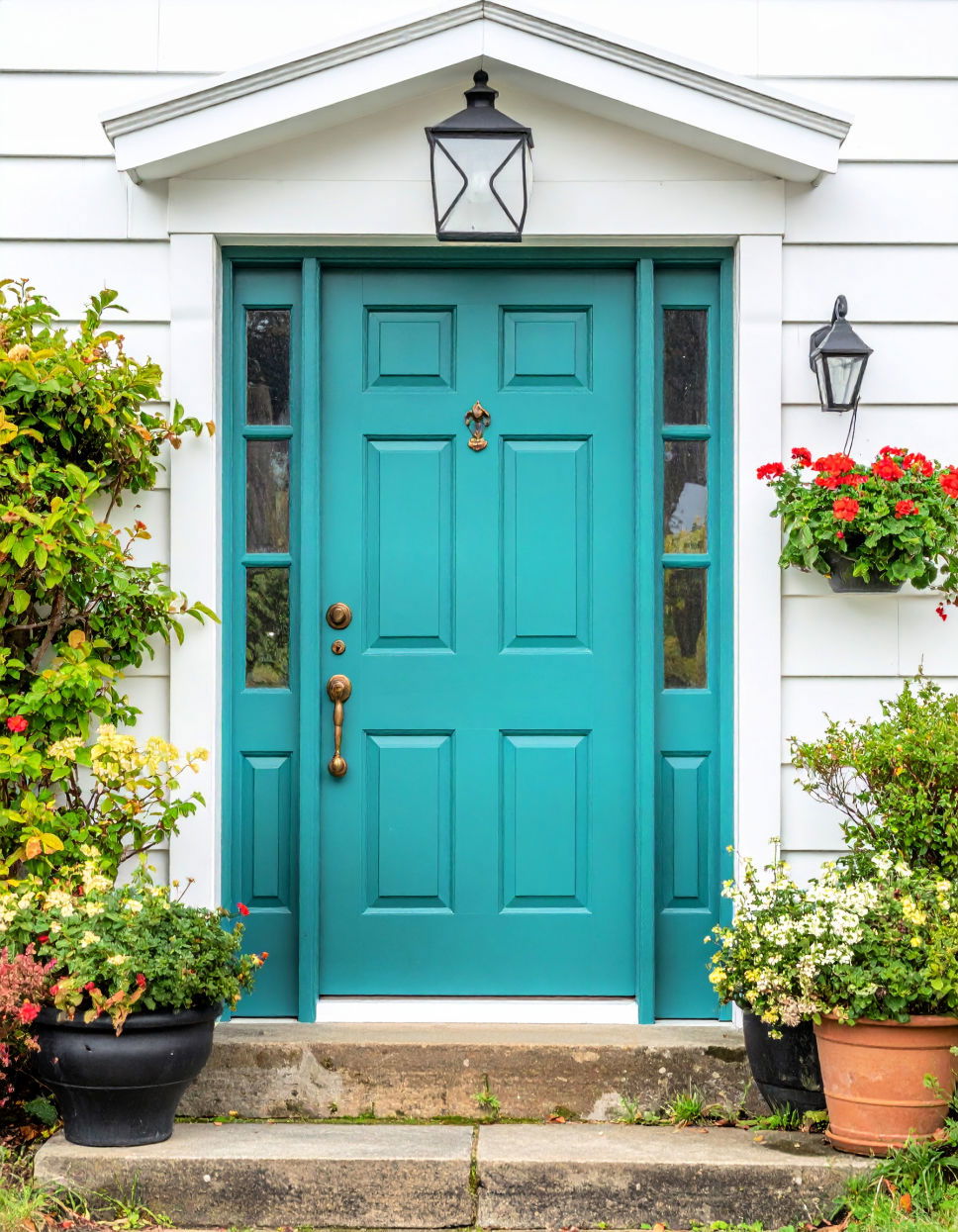
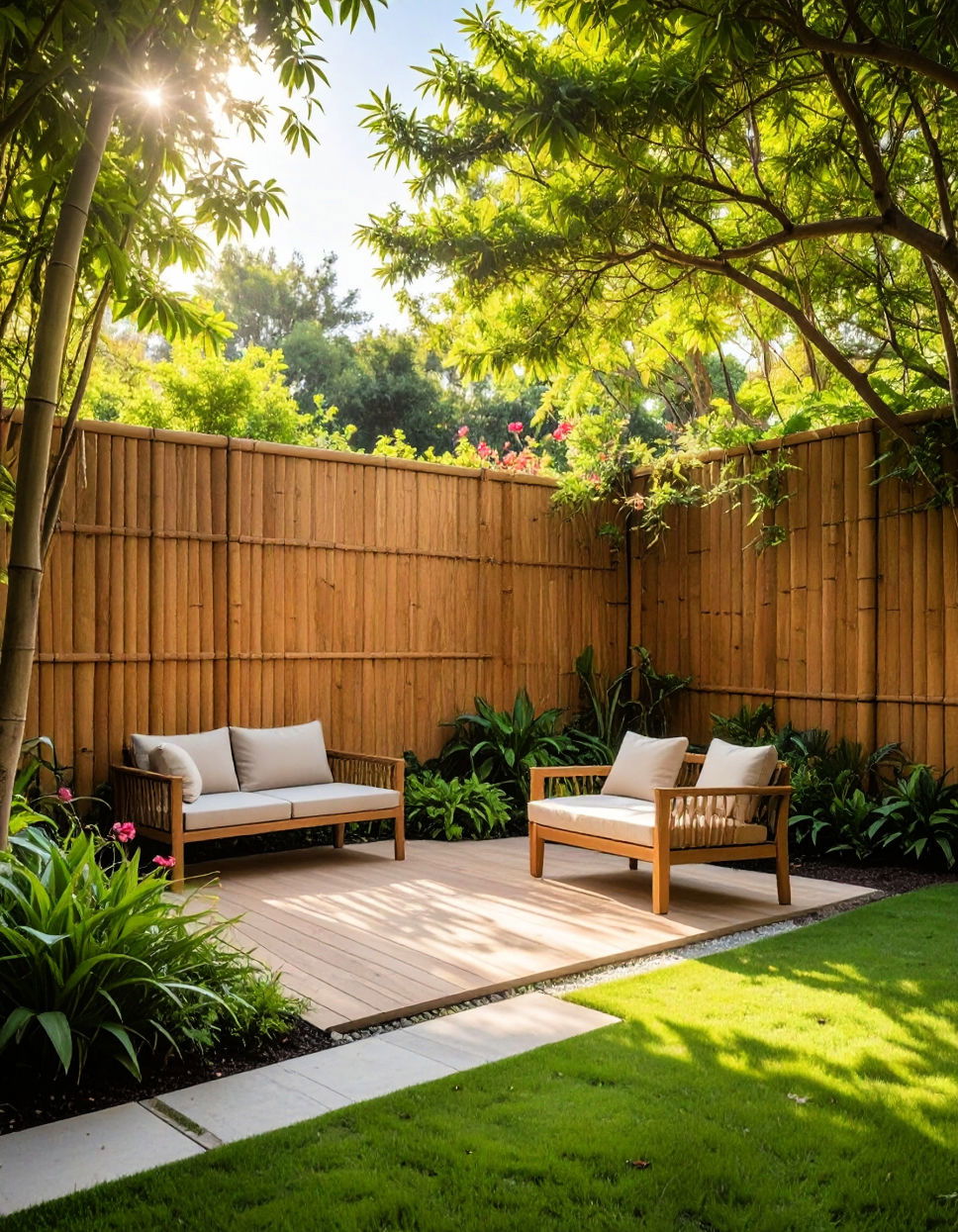
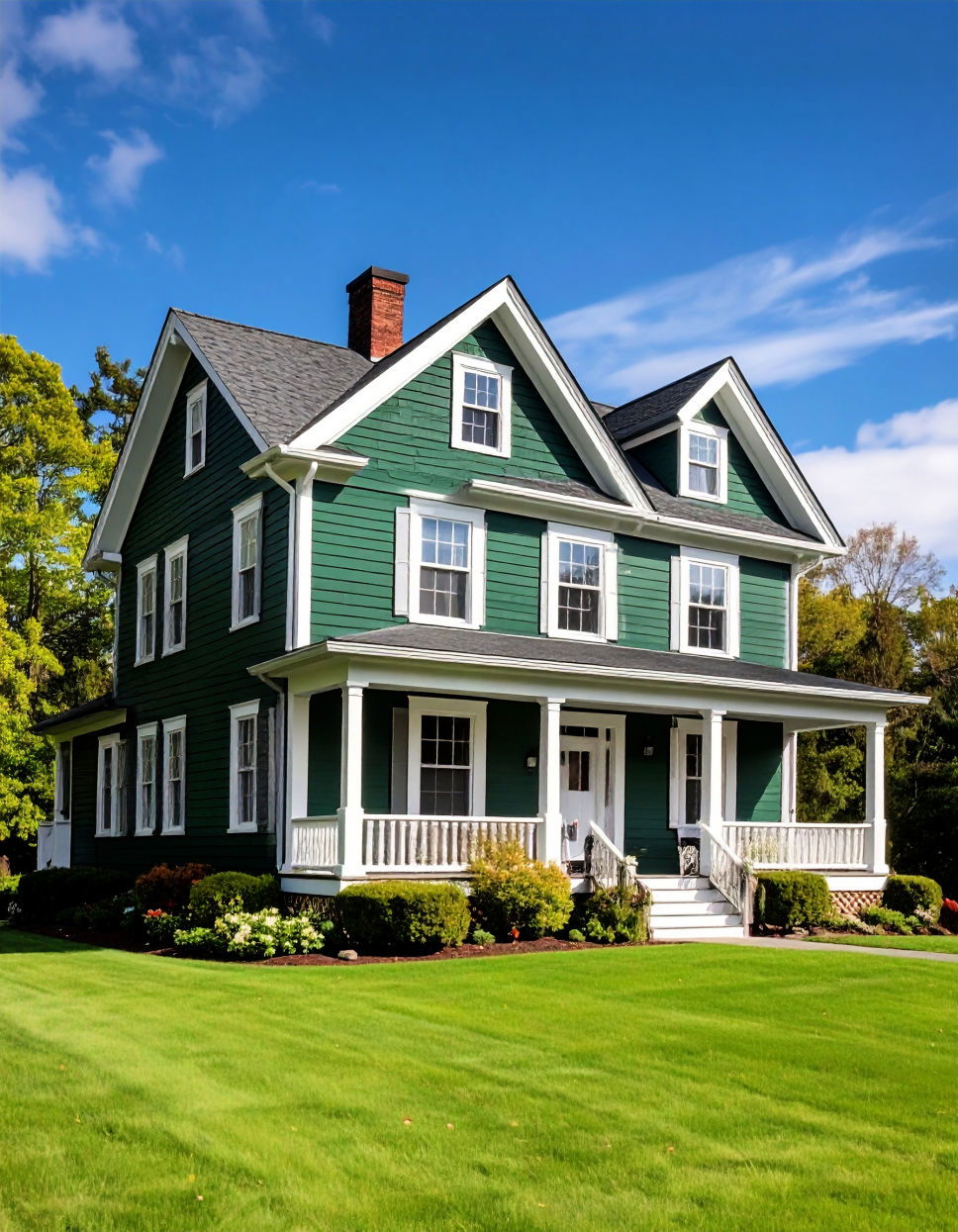
Leave a Reply